Barry Marshall: ulcers
description: an Australian physician who proved that ulcers are caused by the bacteria H. pylori
23 results
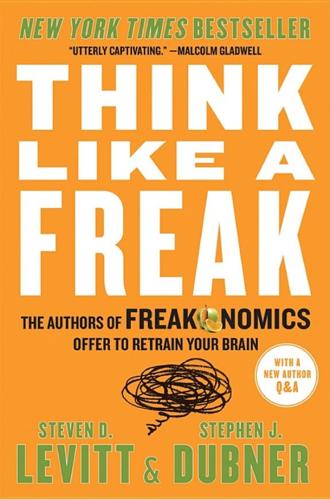
Think Like a Freak
by
Steven D. Levitt
and
Stephen J. Dubner
Published 11 May 2014
No $8 billion industry is ever happy when its reason for being is under attack. Talk about gastric upset! An ulcer, rather than requiring a lifetime of doctor’s visits and Zantac and perhaps surgery, could now be vanquished with a cheap dose of antibiotics. It took years for the ulcer proof to fully take hold, for conventional wisdom dies hard. Even today, many people still believe that ulcers are caused by stress or spicy foods. Fortunately, doctors now know better. The medical community finally came to acknowledge that while everyone else was simply treating the symptoms of an ulcer, Barry Marshall and Robin Warren had uncovered its root cause. In 2005, they were awarded the Nobel Prize.
…
.”: See Roy Porter, The Greatest Benefit to Mankind: A Medical History of Humanity from Antiquity to the Present (HarperCollins, 1997). 78 CONSIDER THE ULCER: The story of Barry Marshall (and Robin Warren) is fascinating and heroic from start to end. We strongly encourage you to read more about him, in any or all of the following works cited, which also include more general information about ulcers and the pharmaceutical industry. For the story of Marshall himself, we were most reliant on a wonderful long interview conducted by the estimable Norman Swan, an Australian physician who works as a journalist. See Norman Swan, “Interviews with Australian Scientists: Professor Barry Marshall,” Australian Academy of Science, 2008.
…
All clear. Then he swallowed a batch of the bacteria that he had cultured from a patient. In Marshall’s mind, there were two likely possibilities: 1. He would develop an ulcer. “And then, hallelujah, it’d be proven.” 2. He wouldn’t develop an ulcer. “If nothing happened, my two years of research to that point would have been wasted.” Barry Marshall was probably the only person in human history rooting for himself to get an ulcer. If he did, he figured it would take a few years for symptoms to arise. But just five days after he gulped down the H. pylori, Marshall began having vomiting attacks. Hallelujah!
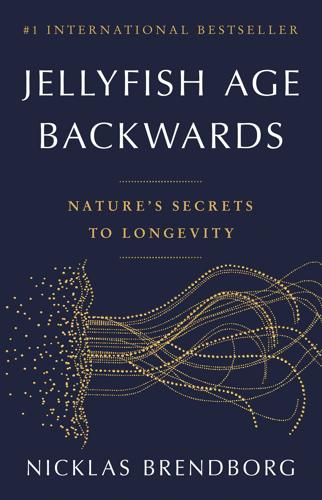
Jellyfish Age Backwards: Nature's Secrets to Longevity
by
Nicklas Brendborg
Published 17 Jan 2023
However, the spiral bacterium, Helicobacter pylori, was gradually recognised as the primary cause of peptic ulcers, and also as the cause of most cases of stomach cancer. Victory was sweet for the stubborn Australians. In 2005, Robin Warren and Barry Marshall were awarded the greatest honour in science, the Nobel Prize, for their discovery. Once upon a time, our understanding of how microbes cause disease went something like this: you get infected with a specific microbe, for instance a bacterium or a virus, and then you develop a corresponding disease. This was one of the reasons Robin Warren and Barry Marshall met resistance. They were working to prove that the bacterium Helicobacter pylori causes peptic ulcers and stomach cancer.
…
At one point, it even seemed like we could declare the final victory in our ancient battle against microbes. But is that true? In the early 1980s in Perth, Australia, a pathologist named Robin Warren noticed something strange in laboratory samples from peptic ulcer patients. When examining them closely, he could see small, spiral-shaped bacteria in all of them. Warren approached a young doctor named Barry Marshall, who immediately began investigating. At the time, people knew that peptic ulcers were caused by stress. They definitely didn’t have anything to do with bacteria. Most scientists assumed that the spiral-shaped bacteria Robin Warren found must have originated in the laboratory.
…
So could the rest of the world’s doctors, but only if Warren and Marshall managed to convince the necessary authorities. The only option was to prove their theory in humans once and for all. But how? With pure Australian nerve, Barry Marshall decided to use himself as a guinea pig. He isolated the spiral-shaped bacteria from a patient, let them grow established in a culture – and then swallowed them. After a few days, he became well and truly ill. Ten days later, the bacteria had spread throughout his stomach, giving him a precursor to peptic ulcers. And, after careful documentation, Marshall used antibiotics to eradicate the infection and cure himself. The daring self-experiment was enough to finally turn the tide in the Australians’ favour.

The Rise and Fall of Modern Medicine
by
M. D. James le Fanu M. D.
Published 1 Jan 1999
Transplantation, by contrast, is technically quite simple, but would have been inconceivable without the fortuitous discovery of azathioprine’s capacity to induce immunological tolerance. This diversity of discovery is perhaps best illustrated by the contrast between the experiences of Bob Edwards and Barry Marshall. Bob Edwards first had to demonstrate that not one but two accepted truths about human fertilisation were in error before even starting on the major project of in vitro fertilisation, which then frustratingly took seven years to be realised. By comparison, Barry Marshall had it easy. His discovery of the significance of helicobacter in peptic ulcer depended on his complete lack of any experience of medical research, which allowed him to think the unthinkable – that it might be an infectious disease.
…
Virtually everyone now knows of couples whose lives, which otherwise would have been ‘blighted by barrenness’, have been immeasurably enriched – thanks to Steptoe and Edwards – by the ability to have children. 12 1984: HELICOBACTER – THE CAUSE OF PEPTIC ULCER This twelfth and last definitive moment of post-war medicine seems much the least significant. In 1983 a young Australian doctor, Barry Marshall, reported the presence of an ‘unidentified curved bacillus’ (a new type of crescent-shaped bacterium) in the lining of the stomach, subsequently named as helicobacter (literally, helix-shaped bacillus), which turned out to be an important cause of several diseases of the upper intestinal tract including gastritis (inflammation of the lining of the stomach), ulcers and stomach cancer. Marshall’s discovery may be of considerable interest but is not in the same league as, for example, the decades of endeavour that led to the cure of childhood leukaemia or transplant surgery.
…
If this is the situation for peptic ulcers then, by analogy, perhaps there should be a similar singular explanation for the other diseases of middle life. The discovery of H. pylori thus illuminates in a striking way the last great intellectual challenge in medicine: finding out the cause of these illnesses. If a bacterium can cause peptic ulcer then presumably other as-yet-unidentified infectious agents might also be responsible for multiple sclerosis or rheumatoid arthritis. In the summer of 1984 a 32-year-old Australian doctor, Barry Marshall, swallowed a cocktail containing large numbers of the bacterium helicobacter, obtained from the stomach of a man suffering from dyspepsia.1 Self-experimentation of this type has a long and distinguished history.
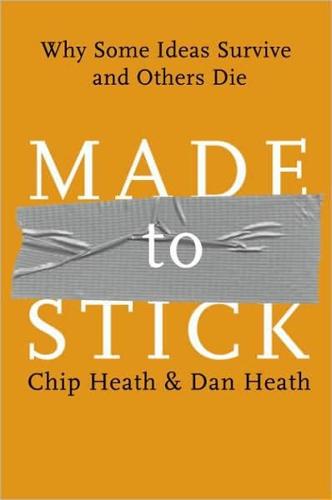
Made to Stick: Why Some Ideas Survive and Others Die
by
Chip Heath
and
Dan Heath
Published 18 Dec 2006
In the early 1980s, two medical researchers from Perth, Australia, made an astonishing discovery: Ulcers are caused by bacteria. The researchers, Barry Marshall and Robin Warren, identified a tiny spiral-shaped type of bacteria as the culprit. (It would later be named Helicobacter pylori, or H. pylori.) The significance of this discovery was enormous: If ulcers were caused by bacteria, they could be cured. In fact, they could be cured within a matter of days by a simple treatment with antibiotics. The medical world, however, did not rejoice. There were no celebrations for Marshall and Warren, who had almost single-handedly improved the health prospects of several hundred million human beings.
…
Sometimes the wellsprings are dry, as Barry Marshall discovered in his quest to cure the ulcer. Drawing on external credibility didn’t work—the endorsement of his supervisors and his institution in Perth didn’t seem to be enough. Drawing on internal credibility didn’t work—his careful marshaling of data and detail still didn’t help him clear the bar. In the end, what he did was draw on the audience’s credibility—he essentially “modeled” a testable credential by gulping a glass of bacteria. The implicit challenge was: See for yourself—if you drink this gunk, you’ll get an ulcer, just like I did. It’s not always obvious which wellspring of credibility we should draw from.
…
CREDIBLE Over the course of a lifetime, one person in ten will develop an ulcer. Duodenal ulcers, the most common type, are almost never fatal, but they are extremely painful. For a long time, the cause of ulcers was a mystery. Conventional wisdom held that ulcers developed when surplus acid built up in the stomach, eating through the stomach wall. Such surplus acid could be caused, it was thought, by stress, spicy foods, or lots of alcohol. Ulcer treatments traditionally focused on mitigating the painful symptoms, since there was no clear way to “cure” an ulcer. In the early 1980s, two medical researchers from Perth, Australia, made an astonishing discovery: Ulcers are caused by bacteria.
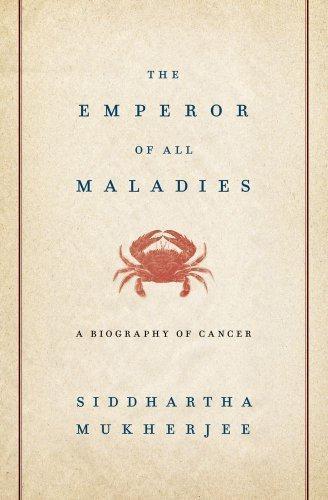
The Emperor of All Maladies: A Biography of Cancer
by
Siddhartha Mukherjee
Published 16 Nov 2010
Robin Warren, “Helicobacter: The Ease and Difficulty of a New Discovery (Nobel Lecture),” ChemMedChem 1, no. 7 (2006): 672–85. 282 Barry Marshall and Robin Warren’s discovery of ulcer-causing bacteria: J. R. Warren, “Unidentified Curved Bacteria on Gastric Epithelium in Active Chronic Gastritis,” Lancet 321, no. 8336 (1983): 1273–75; Barry J. Marshall and J. Robin Warren, “Unidentified Curved Bacilli in the Stomach of Patients with Gastritis and Peptic Ulceration,” Lancet 323, no. 8390 (1984): 1311–15; Barry Marshall, Helicobacter Pioneers: Firsthand Accounts from the Scientists Who Discovered Helicobacters, 1892–1982 (Hoboken, NJ: Wiley-Blackwell, 2002); Warren, “Helicobacter: The Ease and Difficulty”; Barry J.
…
The strangest among the newly discovered “preventable” carcinogens, though, was not a virus or a chemical but a cellular organism—a bacterium. In 1979, the year that Blumberg’s hepatitis B vaccine was beginning its trial in America, a junior resident in medicine named Barry Marshall and a gastroenterologist, Robin Warren, both at the Royal Perth Hospital in Australia, set out to investigate the cause of stomach inflammation, gastritis, a condition known to predispose patients to peptic ulcers and to stomach cancer. For centuries, gastritis had rather vaguely been attributed to stress and neuroses. (In popular use, the term dyspeptic still refers to an irritable and fragile psychological state.)
…
Others could not see the organism; Warren could not grow it; the whole theory, with its blue haze of alien organisms growing above craters in the stomach, smacked of science fiction. Barry Marshall, in contrast, had no pet theory to test or disprove. The son of a Kalgoorlie boilermaker and a nurse, he had trained in medicine in Perth and was an unwhetted junior investigator looking for a project. Intrigued by Warren’s data (although skeptical of the link with an unknown, phantasmic bacteria), he started to collect brushings from patients with ulcers and spread out the material on petri dishes, hoping to grow a bacterium. But as with Warren, no bacteria grew out.
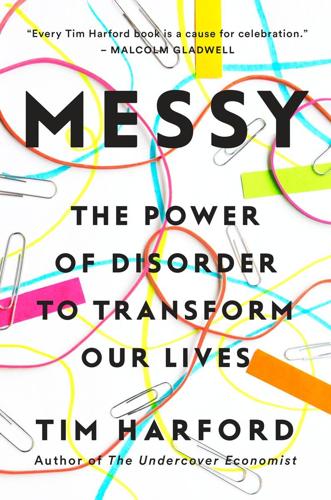
Messy: The Power of Disorder to Transform Our Lives
by
Tim Harford
Published 3 Oct 2016
• • • In 1982, a trainee Australian doctor carried out the most famous piece of self-experimentation since Benjamin Franklin (perhaps) flew a kite in a thunderstorm. Barry Marshall was frustrated by treating stomach ulcers, which were thought to be caused by stress. Ulcers weren’t curable, but managing their symptoms was a fantastically profitable business, producing the first blockbuster drugs, Tagamet and Zantac.1 Marshall and his colleague J. Robin Warren had a radically different view: ulcers weren’t caused by stress at all, but by a corkscrew-shaped bacteria, Helicobacter pylori. They could be cured promptly and completely by a course of inexpensive antibiotics.
…
They could be cured promptly and completely by a course of inexpensive antibiotics. Nobody else took this view seriously, and there was a lot of money riding on it being untrue. Irritated and determined to prove his point, Barry Marshall drank a flask full of H. pylori. He swiftly became ill, with an inflamed stomach full of incipient ulcers—and just as swiftly cured himself with a course of antibiotics. Finally Marshall and Warren had the attention of the medical profession. Eventually they shared the Nobel Prize in Medicine in 2005. We could end the tale there as a triumph for careful observation, Aussie grit, and the wonders of antibiotics.
…
Concerned that the baby had bypassed the microbes of the birth canal, Professor Knight waited until the doctors and nurses were out of the room, then rubbed his baby with a swab coated in her mother’s vaginal fluids in an effort to colonize his daughter’s skin with those maternal microbes. That was speculative—Wild West science in the tradition of Barry Marshall. But Professor Knight is now running a controlled study of much the same technique with babies born by cesarean section in Puerto Rico.9 Finally there is the simple fact that our microbiome is partially heritable, passed from mothers to daughters. It follows that if one generation thins out the messy diversity of their microbiome through antibiotics and antiseptics, the following generation will start from a less diverse foundation.10 It is worth acknowledging that these ideas have already become a fad—a great deal of nonsense is now being talked by quacks and purveyors of probiotic yogurt aiming to promote a “healthy microbiome.”
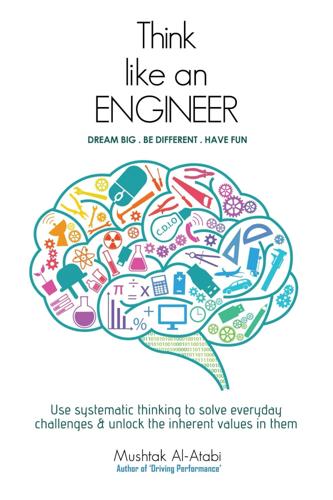
Think Like an Engineer: Use Systematic Thinking to Solve Everyday Challenges & Unlock the Inherent Values in Them
by
Mushtak Al-Atabi
Published 26 Aug 2014
Toothpaste companies for example, enlist the help of dentists to endorse their products. Barry Marshal is an Australian scientist who had a revolutionary idea. While the medical community believed that stomach ulcers are caused by stress and a spicy food diet with basically no cure, Dr Marshal had a different idea. He believed that the ulcer is caused by bacteria and are treatable by antibiotics. The prevailing wisdom was that the stomach was too acidic for any bacteria to live in it. Faced with a community that did not believe him, he did the ultimate, he infected himself with the bacteria, resulting in an ulcer in his stomach! After the disease was diagnosed, Dr Marshal treated his ulcer with antibiotics.
…
After the disease was diagnosed, Dr Marshal treated his ulcer with antibiotics. This discovery had a huge impact on hundreds of thousands of people who have stomach ulcers and eventually earned Barry Marshal the Nobel Prize. Concrete It is easier to comprehend concrete concepts as compared abstract ones. This is particularly true when dealing with technological terminology. For example, if you are contemplating buying an iPhone, you will know that the 32GB option will have double the capacity of the 16GB. But do you really know how much is 16GB? Imagine communicating the capacity of the phone by how many photos or songs it can store or how many hours of video it can accommodate.
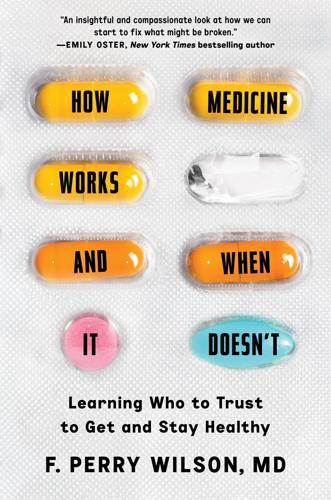
How Medicine Works and When It Doesn't: Learning Who to Trust to Get and Stay Healthy
by
F. Perry Wilson
Published 24 Jan 2023
And I do not necessarily trust that fact-checkers will forever be impartial and unbiased. We may all end up on the wrong side of a fact-check in the future. If, writing prior to 1984, you’d suggested that gastric ulcers were caused by a bacteria rather than psychological stress, a fact-check would have labeled you incorrect. It was in that year that doctors Barry Marshall and Robin Warren published their finding that Helicobacter pylori was the true cause of gastric ulcers (and the reason they are treated with antibiotics today). They were awarded the Nobel Prize for this discovery in 2005. Censorship is not the key to fixing the medical misinformation ecosystem (which goes hand in hand with all the other misinformation out there).
…
Brown, “Assessment of Cardiovascular Diagnostic Tests and Procedures Offered in Executive Screening Programs at Top-Ranked Cardiology Hospitals,” JAMA Internal Medicine 180, no. 4 (April 1, 2020): 586–89, https://doi.org/10.1001/jamainternmed.2019.6607. 10 In a 2014 piece in JAMA: Michael B. Rothberg, “The $50,000 Physical,” JAMA 311, no. 21 (June 4, 2014): 2175–76, https://doi.org/10.1001/jama.2014.3415. 11 It was in that year that doctors Barry Marshall: Barry J. Marshall and J. Robin Warren, “Unidentified Curved Bacilli in the Stomach of Patients with Gastritis and Peptic Ulceration,” Lancet 1, no. 8390 (June 16, 1984): 1311–15, https://doi.org/10.1016/s0140-6736(84)91816-6. 12 The year 2021 saw a treasure trove: Tara Subramaniam, “The Big Takeaways from the Facebook Papers,” CNN Business, October 26, 2021, accessed February 17, 2022, https://www.cnn.com/2021/10/26/tech/facebook-papers-takeaways/index.html. 13 These emojis were weighted five times: “Facebook Prioritized ‘Angry’ Emoji Reaction Posts in News Feeds,” Washington Post, October 26, 2021, https://www.washingtonpost.com/technology/2021/10/26/facebook-angry-emoji-algorithm/. 14 A 2010 article in the journal Health Affairs: Michael V.
…
Our desire to reach the conclusion that we are healthy makes us doubt diagnoses that we don’t want to hear, and seek out multiple opinions in the hope that we will find some data that leads us to the conclusion we wish to be true—that all is well, or at least that all is easily fixable. Just because a particular fact relates to the human body or physiology or a medication doesn’t give it any special privilege. There are true medical facts (The kidney is the only place in the body where a capillary connects two arteries) and false medical facts (Peptic ulcers are caused by stress). Recognizing true facts from false facts is a critical skill, and much of this book will help you separate the wheat from the chaff on that front. But we’re not there yet. Because even true facts are subject to that amorphous cognitive process known as “interpretation.” And interpretation, if you let it, will be colored by motivated reasoning.
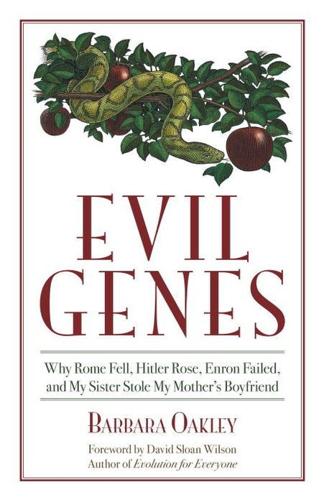
Evil Genes: Why Rome Fell, Hitler Rose, Enron Failed, and My Sister Stole My Mother's Boyfriend
by
Barbara Oakley Phd
Published 20 Oct 2008
As Richard Feynman noted in a commencement address to CalTech: “The first principle is that you must not fool yourself—and you are the easiest person to fool. So you have to be very careful about that.” The reason it's so hard to be sure that “crackpots” aren't actually all they're cracked up to be is that occasionally, a seeming eccentric is proven correct. Dr. Barry Marshall, for example, came up with the idea that bacteria were the cause of most stomach ulcers. He was ridiculed by an establishment that had long held ulcers were caused by stress, spicy foods, and an overly acidic stomach. Scientists felt that bacteria simply could not live in such an acidic environment. “Everyone was against me,” said Marshall, “but I knew I was right.” Marshall eventually proved his theory by drinking a petri dish of bacteria and giving himself gastritis (and to his wife's dismay, bad breath).
…
See also naivete evolutionary aspects evolutionary model for emotional behavior of evolutionary psychiatrist Randolph Nesse, 258–59 “human cultural and behavioral diversity can be understood in the same way as biological diversity,” David Sloan Wilson, 16 neurological apparatus related to conscience played role in development of, 256 reciprocal altruism, 256–57 “tit for tat” as strategy that may have helped lead to development of, 256–60 Wilson, David Sloan, work involving, 17 neuroscience related to anterior insula activated when we feel disgust for cheaters, caudate activated when we punish them, 260 associated with increased activity in posterior superior temporal cortex, 100 trust, cooperation, and the caudate, 20–22 vasopressin, oxytocin—and gullibility, 83 social aspects altruistic individuals whose beneficent acts serve others well Barry Marshall and the discovery of the cause of ulcers, 307n Bill and Melinda Gates, 319 Linda Mealey and her father's bestowal of Award for Young Investigators in her name, 253, 283 ordinary people's heroic acts to save others, 285 Socrates, Joan of Arc, the rebellious students of Tianenmen square and their kind, 305–307 a true Communist, 213 Warren Buffett, 319 altruistic individuals whose kindness allows them to be taken advantage of or suffer abuse “congenital” cooperators, 259 Hitler's belief that humbler people responded more readily to his call, 334 kindheartedness of Laci Peterson, 255 little Adupa judged insane and killed by family in starving Ik tribe, 383n Mao's wife Kaihui killed rather than denounce Mao—even though Mao had abandoned her, 221–22 Williams syndrome, 98–99 altruists often surprised at how ethics policies are used by Machiavellians for nefarious purposes (e.g., “bad whistle-blowers” and “moral entrepreneurs”), 335 Christian pacifists and Muslim terrorists act as altruists—so what is a Machiavellian, 285 intimidation by Machiavellians can keep even the most altruistic silent out of fear for their loved ones, 333–34 social aspects altruistic individuals whose beneficent acts serve others well Barry Marshall and the discovery of the cause of ulcers, 307n Bill and Melinda Gates, 319 Linda Mealey and her father's bestowal of Award for Young Investigators in her name, 253, 283 ordinary people's heroic acts to save others, 285 Socrates, Joan of Arc, the rebellious students of Tianenmen square and their kind, 305–307 a true Communist, 213 Warren Buffett, 319 altruistic individuals whose kindness allows them to be taken advantage of or suffer abuse “congenital” cooperators, 259 Hitler's belief that humbler people responded more readily to his call, 334 kindheartedness of Laci Peterson, 255 little Adupa judged insane and killed by family in starving Ik tribe, 383n Mao's wife Kaihui killed rather than denounce Mao—even though Mao had abandoned her, 221–22 Williams syndrome, 98–99 altruists often surprised at how ethics policies are used by Machiavellians for nefarious purposes (e.g.
…
See also naivete evolutionary aspects evolutionary model for emotional behavior of evolutionary psychiatrist Randolph Nesse, 258–59 “human cultural and behavioral diversity can be understood in the same way as biological diversity,” David Sloan Wilson, 16 neurological apparatus related to conscience played role in development of, 256 reciprocal altruism, 256–57 “tit for tat” as strategy that may have helped lead to development of, 256–60 Wilson, David Sloan, work involving, 17 neuroscience related to anterior insula activated when we feel disgust for cheaters, caudate activated when we punish them, 260 associated with increased activity in posterior superior temporal cortex, 100 trust, cooperation, and the caudate, 20–22 vasopressin, oxytocin—and gullibility, 83 social aspects altruistic individuals whose beneficent acts serve others well Barry Marshall and the discovery of the cause of ulcers, 307n Bill and Melinda Gates, 319 Linda Mealey and her father's bestowal of Award for Young Investigators in her name, 253, 283 ordinary people's heroic acts to save others, 285 Socrates, Joan of Arc, the rebellious students of Tianenmen square and their kind, 305–307 a true Communist, 213 Warren Buffett, 319 altruistic individuals whose kindness allows them to be taken advantage of or suffer abuse “congenital” cooperators, 259 Hitler's belief that humbler people responded more readily to his call, 334 kindheartedness of Laci Peterson, 255 little Adupa judged insane and killed by family in starving Ik tribe, 383n Mao's wife Kaihui killed rather than denounce Mao—even though Mao had abandoned her, 221–22 Williams syndrome, 98–99 altruists often surprised at how ethics policies are used by Machiavellians for nefarious purposes (e.g., “bad whistle-blowers” and “moral entrepreneurs”), 335 Christian pacifists and Muslim terrorists act as altruists—so what is a Machiavellian, 285 intimidation by Machiavellians can keep even the most altruistic silent out of fear for their loved ones, 333–34 social aspects altruistic individuals whose beneficent acts serve others well Barry Marshall and the discovery of the cause of ulcers, 307n Bill and Melinda Gates, 319 Linda Mealey and her father's bestowal of Award for Young Investigators in her name, 253, 283 ordinary people's heroic acts to save others, 285 Socrates, Joan of Arc, the rebellious students of Tianenmen square and their kind, 305–307 a true Communist, 213 Warren Buffett, 319 altruistic individuals whose kindness allows them to be taken advantage of or suffer abuse “congenital” cooperators, 259 Hitler's belief that humbler people responded more readily to his call, 334 kindheartedness of Laci Peterson, 255 little Adupa judged insane and killed by family in starving Ik tribe, 383n Mao's wife Kaihui killed rather than denounce Mao—even though Mao had abandoned her, 221–22 Williams syndrome, 98–99 altruists often surprised at how ethics policies are used by Machiavellians for nefarious purposes (e.g.

The Great Mental Models: General Thinking Concepts
by
Shane Parrish
Published 22 Nov 2019
As Kevin Ashton writes in his book on creativity, discovery, and invention, “the dogma of the sterile stomach said that bacteria could not live in the gut.”3 Because this dogma was taken as truth, for a long time no one ever looked for reasons that it could be false. That changed for good with the discovery of the H. pylori bacteria and its role in stomach ulcers. When pathologist Robin Warren started seeing bacteria in samples from patients’ stomachs, he realized that stomachs were not, in fact, sterile. He started collaborating with Barry Marshall, a gastroenterologist, and together they started seeing bacteria in loads of stomachs. If the sterile stomach wasn’t a first principle, then, when it came to stomachs, what was? Marshall, in an interview with Discover, recounts that Warren gave him a list of 20 patients identified as possibly having cancer, but when he had looked he had found the same bacteria in all of them instead.
…
If we do, we will never identify the first principles we have to work with, and will instead make mistakes that will slow us down in the long term. «Science is much more than a body of knowledge. It is a way of thinking.» Carl Sagan2 First principles thinking as a way to blow past inaccurate assumptions The discovery that a bacterium, not stress, actually caused the majority of stomach ulcers is a great example of what can be accomplished when we push past assumptions to get at first principles. Since the discovery of bacteria, scientists thought that bacteria could not grow in the stomach on account of the acidity. If you had surveyed both doctors and medical research scientists in the 60s or 70s, they likely would have postulated this as a first principle.
…
Since they now knew stomachs weren’t sterile, they could question all the associated dogma about stomach disease and use some Socratic-type questioning to work to identify the first principles at play. They spent years challenging their related assumptions, clarifying their thinking, and looking for evidence.4 Their story ultimately has a happy ending—Marshall and Warren were awarded the Nobel Prize in 2005, and now stomach ulcers are regularly treated effectively with antibiotics, improving and saving the lives of millions of people. But many practitioners and scientists rejected their findings for decades. The dogma of the sterile stomach was so entrenched as a first principle, that it was hard to admit that it rested on some incorrect assumptions which ultimately ended with the explanation, “because that’s just the way it is”.

Radical Uncertainty: Decision-Making for an Unknowable Future
by
Mervyn King
and
John Kay
Published 5 Mar 2020
For many years, it was conventional wisdom among doctors that stomach ulcers were caused by stress and bad lifestyle leading to a build-up of acid in the stomach. Dr Robin Warren, an Australian pathologist, tried for many years to argue that ulcers were in fact the result of a bacterial infection. In the 1980s, together with fellow Australian Barry Marshall, he studied biopsies from a hundred patients and cultivated a bacterium which became known as Helicobacter pylori from some of these biopsies. They found that the organism was present in almost all the patients with gastric inflammations and duodenal and gastric ulcers. Yet it proved difficult to change the dominant narrative.
…
Yet it proved difficult to change the dominant narrative. Conventional treatment for ulcers required daily medication, possibly for life. Antacid drugs were therefore a major source of pharmaceutical company profits, but a course of antibiotics cost only a few dollars. So the industry, and the medical profession, were resistant to the idea that ulcers could be cured by antibiotics – in fact, most professionals denied that H. pylori was a pathogen at all. 12 So Marshall decided to swallow a solution containing the bacteria, and promptly came down with an attack of gastritis that often leads to ulcers. This drastic experiment changed the narrative.
…
And it is that interpretation – risk as failure to fulfil the central elements of the reference narrative – which we will continue to use, in this book and in our everyday lives. In earlier chapters we described some risk lovers who have changed society – Richard Branson, Winston Churchill, Steve Jobs, Elon Musk, George Orwell. Ignaz Semmelweis, whose dogmatic conviction of his own rightness drove him to insanity but helped save the lives of millions of women. Barry Marshall, who changed medical practice and won a Nobel Prize by infecting himself with bacteria. None of this behaviour has anything to do with the utility of wealth functions of these individuals. And as we learn more about neurophysiology, we may come to understand such behaviour better by monitoring activity in the prefrontal cortex and the handling of the chemical dopamine than by proselytising for axiomatic rationality.
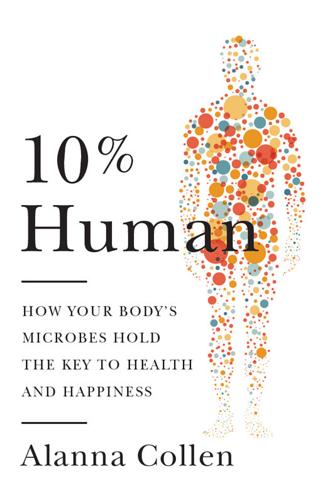
10% Human: How Your Body's Microbes Hold the Key to Health and Happiness
by
Alanna Collen
Published 4 May 2015
If this seems like too radical a suggestion, consider this: just a few decades ago, stomach ulcers were ‘known’ to be caused by stress and caffeine. Like obesity, they were thought of as a lifestyle disease – change your habits and the problem will go away. The solution was simple: keep calm and drink water. But this treatment didn’t work – patients returned again and again, with acid burning holes in their stomachs. The cause of their failure to recover was deemed obvious; these patients must not be sticking to their treatment plans, allowing stress to prevent them from getting better. But then, in 1982, two Australian scientists, Robin Warren and Barry Marshall, discovered the truth.
…
A bacterium called Helicobacter pylori that sometimes colonised the stomach was causing ulcers and the related condition gastritis. Stress and caffeine simply made them more painful. Such was the resistance of the scientific community to Warren and Marshall’s idea, that Marshall drank a solution of H. pylori, giving himself gastritis in the process, to prove the connection. It took fifteen years for the medical community to fully embrace this new cause. Now, antibiotics are a cheap and effective way to cure ulcers for good. In 2005, Warren and Marshall won a Nobel Prize in Physiology or Medicine for their discovery that stomach ulcers were not a lifestyle disease, as dogma dictated, but the result of an infection.
…
Page numbers in italic refer to the illustrations abscesses 37 Academic Medical Center, Amsterdam 255, 256–7 accidents, Toxoplasma infection and 97 acetate 107, 195, 217 acne 23, 129, 141, 142–4, 168 Actinobacteria 226, 230 adenoviruses 75, 76–7, 78 adipose cells see fat cells Adlerberth, Ingegerd 131 adrenalin 104–5 affluence, and twenty-first-century illnesses 46–8 Africa: asthma 50 births 214 diet and gut microbiota 184, 185, 262–3 Ebola epidemic 115 garden warblers 55 personal hygiene 176 age, and twenty-first-century illnesses 48–50 ageing 228, 231, 235, 268 agriculture: antibiotic use 147–8, 160–4, 165, 272 Neolithic Revolution 184–5, 201 Akkermansia 283–4 Akkermansia muciniphila 79–81, 193–4, 258 Alabama 46 alcohol hand-rubs 175 Alexander, Albert 37 Aliivibrio fischeri 12 Allen-Vercoe, Emma 109–10, 111, 112, 259–60, 261–2 allergies 24, 38–9, 43, 44, 48 affluence and 46–7 after Caesarean birth 212 antibacterial products and 171 antibiotics and 130, 166–7 antihistamines 39, 116, 269 bottle-feeding and 223 in developing countries 47 family size and 117, 118 gender differences 51, 52 hygiene hypothesis 117–19, 121, 130–2, 145 immune system and 44–5, 116–21, 130–1 increase in incidence 52, 116 and infections 116–19 microbes and 131–2 probiotics and 242 racial differences 50 Alm, Eric 253 Alps 115 alternative medicine 137–9 Alvarez, Walter 238 Amazon rainforest 262, 282 American Gut Project (AGP) 4–5, 281–2 Amerindians 262–3 amino acids 70, 71, 180, 271 ammonia 176–7 ammonia-oxidising bacteria (AOBs) 176–8 anaemia 221 anaerobic bacteria 95 anaphylactic attacks 38 androgens 143 Animalia 16, 17 animals: allergies to 119 antibiotics as growth promoters 147–8, 160–4, 272 coprophagy 245–8 Neolithic Revolution 184–5, 201 transmission of microbes 115 see also individual types of animal anthrax 115 antibacterial products 169–72, 175, 214–15 antibiotics 2, 147–68, 276–7, 281, 285 and acne 143 and allergies 130, 166–7 antibiotic resistance 152, 153, 154–5, 156 and autism 86, 90–2, 94–5, 106–7, 111, 165–6 and autoimmune diseases 167–8 benefits of 168 and birth 163, 215 broad-spectrum antibiotics 156, 270 and Clostridium difficile 157, 234, 250 development of 36–7 and diarrhoea 155, 157, 241–2 effects on microbiota 129, 157–8, 161 as growth promoters for animals 147–8, 160–4, 272 harmful side-effects 5–6, 155–6, 269 and immune system 129–30 and irritable bowel syndrome 64–5 lactobacilli and 206–7 and life expectancy 28 and obesity 147–9, 159–65 residues in vegetables 164–5 and stomach ulcers 74 and twenty-first-century illnesses 158–9 unnecessary prescriptions 152–3, 269–70 antibodies 30, 139, 231 antidepressants 269 antigens 132–3 antihistamines 39, 116, 269 ants 84 anxiety disorders 42, 51, 99, 175 AOBiome 176, 177–8 apes 16 apocrine glands 177 appendicitis 14, 15–16, 43, 223, 266 appendix 13–16, 21, 45, 203, 208, 266 appetite control 67–8, 72–3, 80, 196 arabinoxylan 194 Arabs 46 archaea 8 Argentina 210 arginine 271 arthritis 183, 196 asbestos 170 Asia 47, 214 Asperger syndrome 87 asthma 44, 49 antibiotics and 130, 166–7 bottle-feeding and 223 fibre and 199 immune system and 116, 196 incidence 38, 39, 47, 52 racial differences 50 wealth and 47 Atkinson, Richard 74–5, 77 attention deficit hyperactivity disorder (ADHD) 42, 98–9, 105, 108, 175 aureomycin 160 Australia: acne 142 birth 214–15 encephalitis lethargica 173 faecal transplants 250–1, 259 fruit and vegetable consumption 273 racial differences in diseases 50 sugar consumption 188, 189 twenty-first-century illnesses 46 autism 38, 43, 44, 49, 85–96 after Caesarean sections 212 antibiotics and 86, 90–2, 94–5, 106–7, 111, 165–6 autistic spectrum disorder (ASD) 87–8 behaviour problems 88, 108–9 and coprophagy 246 and ear infections 166 faecal transplants and 254–5 gastrointestinal symptoms 45, 85–7, 90 gender differences 51, 89 genetics and 89 immune system and 106, 108 incidence of 42, 46, 53, 88–9 lipopolysaccharide and 141 microbes and 90–2, 94–6, 109–12, 165–6 probiotics and 242 propionate and 107–9 racial differences 50–1 savants 87, 108 symptoms 87–8, 282 autoimmune diseases 24, 38, 39–41, 43 affluence and 47 and antibiotics 167–8 appendix and 16 and Caesarean sections 212 in childhood 49 in developing countries 47 faecal transplants and 254 gender differences 51, 52, 267 immune system and 44–5 incidence of 46 IPEX syndrome 133 probiotics and 242 racial differences 50 T helper cells and 119 see also individual diseases autointoxication 236–8 autopsies 33 babies 273–4 antibiotics 152–3, 158, 159–60, 161–2 bottle-feeding 220–6, 273–5 breast-feeding 216–20, 221, 222–6, 230–1, 274–5, 278, 285 Caesarean births 209–15, 220, 274, 278 caul births 214 colic 215–16 ear infections 151 gut microbiota 131, 217 immune system 208–9, 217, 227 infant mortality 222–3 probiotics and 242 transfer of microbes to 204–9, 212–14 vaginal delivery 209–12, 220, 274, 278 water birth 214 weaning 226 wet nursing 220–1 Bäckhed, Fredrik 66–7, 71, 147, 160 bacteria: alcohol hand-rubs 175 ammonia-oxidising bacteria 176–8 anaerobic bacteria 95 antibacterial products 169–72 antibiotic resistance 152, 153, 154–5, 156 collateral damage from antibiotics 155–6, 157 colony-forming units 244 DNA sequencing 17 lipopolysaccharide 140 and mitochondria 123, 123 prebiotics 258 probiotics 237–44 quorum sensing 136 and stomach ulcers 74 see also gut microbiota; microbes and individual types of bacteria bacteriocins 161, 206–7, 208 bacteriocytes 205 bacteriotherapy 245, 248 Bacteroides 23, 157, 194 Bacteroides fragilis 134–5 Bacteroides plebeius 192 Bacteroidetes 68–9, 70, 81, 185, 186, 187, 191, 226, 282 BALB mice 99 barley 139, 199 basal ganglia 174–5 bats 1–2, 100, 115, 124–5, 181, 182, 236 beans, fibre content 190, 191 Bedouin 201 Bedson, Henry 26 bees 124 behaviour: in autism 88, 108–9 changed by microbes 84–5, 96–7, 112–13 neurotransmitters 103, 104–5 propionate and 107–9 Bengmark, Stig 46 Bifidobacterium 193–4, 196–7, 217, 226, 239, 240, 258, 284 Bifidobacterium infantis 93 bile 145, 263 bioluminescence 12 bipolar disorder 105 birds 54–6, 205 birth 278 antibiotics in 163, 215 Caesarean section 209–15, 220, 274 caul births 214 childbed fever 32–3 home births 214 hormones 220 hygiene 214–15 transfer of microbes to babies 205–7, 212–13 vaginal deliveries 209–12, 220, 274, 278 water birth 214 bison 125–6 Blaser, Martin 162, 163, 182 blood 181 blood pressure 199, 231, 256 blood sugar levels 256 blood transfusions 249, 253, 254 bobcats 84, 97 Body Mass Index (BMI) 41, 69, 79, 161, 188, 193, 197 body odour 175–7 Bolte, Andrew 86–7, 88, 89–92, 94–6, 110, 111, 112, 165–6 Bolte, Ellen 86–7, 88, 89–92, 94–6, 106, 110–11, 112, 165–6 Bolte, Erin 86, 110, 111–12 Borody, Tom 250–2, 254–5, 259 bottle-feeding 220–6, 273–5 Boulpon, Burkina Faso 184, 185, 190 brain: connections to gut 92–3, 104–5, 106–7, 109–10 development of 93–4 encephalitis lethargica 173–4 immune system 103–4, 105 inflammation 108 memories 108–9 microbes and 98–9 neurotransmitters 103, 104–5 obsessive-compulsive disorder 172–3, 174 propionate and 107–9 strokes 50, 107, 183, 199, 256, 268 synapses 120 tetanus 91 Whipple’s disease 85 see also mental health conditions Brand-Miller, Jennie 215–16 Brazil 46, 47, 209, 212 bread 198, 199–200, 202 breast cancer 44, 145 breast-feeding 216–20, 221, 222–6, 230–1, 274–5, 278, 285 Britain: antibiotic use 130, 150–1 breast-feeding 225 Caesarean sections 210, 211–12 Clostridium difficile 156 consumption of fats and sugar 188 diabetes in children 40–1 fall in calorific intake 189 fruit and vegetable consumption 190–1, 273 gut microbes in babies 131 obesity 42, 58 broccoli 198 bronchitis 152 ‘Bubble Boy’ 126–8, 181 Burgess, James 253 Burkina Faso 184, 185, 190, 191, 263 Butler, Chris 153–4, 155 butyrate 107, 195, 196–7, 217, 257, 284 caecum 13, 21, 45, 128 Caesarean birth 209–15, 220, 274 caffeine 73, 74 cakes 198 California Institute of Technology 134 calories: calculating contents of foods 69–70 dieting 149, 186–7 differences in weight gain 77–8 fall in consumption of 189 microbes and extraction of 67, 70–2 and obesity 56–7, 61 Campylobacter jejuni 65 Canada 46, 47, 51, 62, 99, 106, 173, 259–60 cancer: ageing and 49 blood cancer 16 bottle-feeding and 223 breast cancer 44 as cause of death 268 cervical cancer 144 chemotherapy 270 colon cancer 23–4, 144, 145, 258 diet and 183 immune system and 120–1 infections and 144 liver cancer 144–5 lymphoma 127 metabolic syndrome and 256 microbes and 144–5 obesity and 42, 50, 145 prebiotics and 258 shingles and 271 stomach cancer 144 Cani, Patrice 78–9, 80–1, 193–4, 197 car accidents 97 carbohydrates: calorie content 69 dieting 185–8 digestion of 180 effects of 198 fibre 192 oligosaccharides 216–18 types of 197–8 carbolic acid 34, 36 Carmody, Rachel 179–80, 182, 198–9 carnivores 181–2, 192, 203, 263 casein 111, 200 cats 96 cattle 12–13, 181, 192, 201, 204, 272 caul births 214 cells, mitochondria 123, 123 cellulose 191, 192 centenarians 265 Centers for Disease Control (CDC) 88–9, 152, 212 Central America 100 Centre for Digestive Diseases, Sydney 250–2, 254 cervical cancer 144 Chain, Sir Ernst Boris 37 Charles University, Prague 97 cheese 159 cheetahs 124 chest infections 153 chickens: antibiotic treatment 147–8, 165 virus disease 57, 61, 74–5, 76–7, 78 Chida, Yoichi 93 childbed fever 32–3, 34 childbirth see birth children: allergies 38–9, 116–17 antibiotic use 151, 161–2, 165–6 autism 88–9, 165–6 brain development 93–4 death rates 28, 31 ear infections 86, 87, 90, 94, 151, 152, 153, 166, 222 fat intake 190 gut microbiota 226–7 hygiene 278–9 infectious diseases 31 obesity 58, 223–4 twenty-first-century illnesses 49 see also babies Children of the 90s project 130 chimpanzees 102, 245–7 China 47, 209, 249–50 chlorinated lime 33 chlorinated water 172 chlorine 35–6, 62 chloroform 172 cholera 15, 27, 30, 34–5, 45–6, 135–7, 139 Cholera Auto-Inducer 1 (CAI–1) 136 cholesterol 194, 229, 231, 256 Church, Andrew 173–4 ciprofloxacin 157–8 cleaning products 169–72, 175, 214–15 clindamycin 157 Clinton, Bill 10 Clostridium 96, 107, 145 Clostridium bolteae 106 Clostridium difficile 90, 271 antibiotics and 156–7, 234–5, 241, 250 in babies’ gut microbiota 213 bottle-feeding and 222 deaths from 156, 245 faecal transplants 249, 250, 251, 252–3, 259, 260 Lactobacillus and 206 symptoms 156 Clostridium tetani 90–2, 94, 95, 96, 110–11 clothing 176 cockroaches 204–5 coeliac disease 39, 41, 139–40, 183, 200, 202, 212 Cold Spring Harbor Laboratory, New York State 7, 24 colds 51, 129–30, 152, 167 colic, infantile 215–16 colitis, ulcerative 42, 49, 144 colon: autointoxication 236–8 colon cancer 23–4, 144, 145, 258 colonic irrigation 237 digestion 180–1 toxic megacolon 156, 245 see also gut microbiota; inflammatory bowel disease; intestines; irritable bowel syndrome colony-forming units (CFUs), bacteria 244 colostrum 217, 219, 220 constipation 62–3, 65, 238, 251, 254 contraceptives 102 cooking food 199 coprophagy 245–8 Cordyceps fungi 84 Cornell University 230 Corynebacterium 20, 21, 168–9, 177, 213 cough, sudden-onset 155 cowpox 27, 29 cows 12–13, 181, 192, 201, 204, 272 cow’s milk 216, 221 Crapsule 259 Crohn’s disease 42, 49, 52, 144 Cuba 210 Cyanobacteria 65 cytokines 48, 105, 106, 141 D-Day landings (1944) 37, 150, 158 dairy produce 200, 201 Dale, Russell 173–4 dander 119 Danish National Birth Cohort 161–2 Darwin, Charles 280 The Descent of Man 13, 14 The Expression of Emotions in Man and Animals 92 On the Origin of Species 124, 279 Dawkins, Richard, The Selfish Gene 125, 126 death 235–6 babies and children 28, 31, 222–3 causes of 268 Clostridium difficile 245 diarrhoea and 15 dementia 105 dendritic cells 219 Denmark 52, 161–2, 167–8 deodorants 175, 177, 178 deoxycholic acid (DCA) 145 depression 42, 45, 51, 65, 98, 103–4, 105, 141 dermatitis 23 developing countries: antibiotic use 153–4 twenty-first-century illnesses 53 Dhurandhar, Nikhil 56–7, 61, 74–5, 76–7, 82, 149 diabetes 38, 44, 139, 269 and antibiotics 167–8 bottle-feeding and 223, 224 breast-feeding and 231 and Caesarean sections 212 in childhood 4, 119 diet and 183 faecal transplants 255 gender differences 267 incidence of 39, 40–1, 47, 52, 158 leaky guts and 140 lipopolysaccharide and 141 metabolic syndrome 256–7 obesity and 42, 50, 256 probiotics and 242–3, 257–8 racial differences 50 symptoms 39–40 diarrhoea: antibiotics and 155, 157, 241–2 and autism 45, 85–7, 90 as cause of death 15, 27, 268 cholera 34–5, 135–7 Clostridium difficile 156, 222, 234–5, 241 and coprophagy 246 faecal transplants 250–1, 260 irritable bowel syndrome 62–5 probiotics and 241–2 diet see food dieting 59, 148–9, 184, 186–7, 197, 199 digestive system 180 see also colon; gut microbiota; intestines digoxin 271 diphtheria 27, 28 diseases: antibodies 30, 139, 231 diet and 183 epidemiology 35, 45–6 genes and 10, 43–4, 268 germ theory 34, 236 infectious diseases 27–9, 43, 115, 118, 153–4 obesity as infectious disease 75–7 pathogens 28–9 transmission of microbes 114–16 vaccinations 25, 26–7, 29–31, 35, 91, 118, 165 water-borne diseases 34–6 see also antibiotics and individual diseases DNA: and cancer 120–1, 144, 145 DNA sequencing 4, 9–11, 16–17, 65 human genome 279–80 doctors: antibiotic prescriptions 152–3, 277 hospital hygiene practices 31–4 Dodd, Diane 100–1 dogs 84, 85, 124 Dominguez-Bello, Maria Gloria 214, 278, 285 Dominican Republic 210 donors: faecal transplants 261, 262 sperm donors 260–1 dopamine 104–5 drugs: gut microbiota and 270–2 see also antibiotics dummies 151 dysbiosis 64–6 dysentery 15, 27 E. coli 62, 239, 254 ear infections 86, 87, 90, 94, 151, 152, 153, 166, 222 East Africa 176 Eastern Europe 47 Ebola 115 eccrine glands 177 ecological succession 208 eczema 38, 49 antibiotics and 130, 166–7 bottle-feeding and 223 incidence 39, 47, 52 prebiotics and 258 probiotics and 242 Eggerthella lenta 271 Egypt 201 Eiseman, Ben 251 elephants 245 Elizabeth II, Queen of England 265 emotions, and irritable bowel syndrome 92–3 encephalitis lethargica 173–4 energy: in food 69–72 mitochondria 123 storage in body 77–8 enterobacteria 131 Enterococcus 219 environment, and twenty-first-century illnesses 44 enzymes 12–13, 180, 182, 191, 192, 263 epidemiology 35, 45–6 epinephrine 104–5 Epstein-Barr virus 127 Eubacterium rectale 197 Eukarya 16 Europe: acne 142 antibiotic use 150, 163–4, 272 birth 214–15 breast-feeding 224 encephalitis lethargica 173 fat consumption 188 hygiene hypothesis 117 racial differences in diseases 50 see also individual countries evolution 11–12, 44, 84–5, 109, 124–6 fabrics, clothing 176 Faecalibacterium 284 Faecalibacterium prausnitzii 197 faeces: and birth 206, 207 coprophagy 245–7 DNA sequencing microbes in 23 faecal transplants 245, 248–57, 258–62 see also gut microbiota families, microbiotas 228 farming see agriculture Fasano, Alessio 136–7, 139–40, 200 fat cells: appetite control 72, 73 fibre and 196 lipopolysaccharide and 141 in obese people 78–9, 141 in pregnancy 230 storage of fat 72 FATLOSE (Faecal Administration To LOSE insulin resistance) 256–7 fats: calorie content 69, 77–8 consumption of 188, 189–90 dieting 186–8 digestion of 71, 180 high-fat diets 192–3, 194 fatty acids 180, 188 fibre: and Akkermansia 81, 193–4 and appendicitis 15 and butyrate 196–7 consumption of 190–1 in faeces 23 Five-a-Day campaign 273 and gut microbiota 191–9, 202–3, 204, 263, 276, 282–4 and obesity 192–5, 197 prebiotics 258 wheat and gluten intolerance 199–202 Finegold, Sydney 95–6, 106–7, 109 Firmicutes 68–9, 70, 81, 161, 185, 186, 187, 191, 226, 282 First World War 28, 36 fish, gut microbiota 205 Five-a-Day campaign 273 Fleming, Sir Alexander 36, 37, 154, 156 flies, fruit 100–1 Florence 184, 190, 191 Florey, Ethel 37 Florey, Howard 36–7 flour, fibre content 198 flu 27, 28, 48, 50, 129, 152, 167 folic acid 227–8 food 179–203, 272–3 and ageing 231 allergies and intolerances 38, 47, 49, 199–202 antibiotic residues in 164–5 calorie content 69–72 consumption of fats 188 cooking 199 digestion of 23 fibre content 190–9, 202–3, 273, 276, 282–4 and gut microbiota 184–8 healthy diet 183–4 Neolithic Revolution 184–5 packaged foods 182–3, 202 preservatives 202 sugar consumption 188–9 weaning babies 226 Food and Drug Administration (FDA) 172, 252, 272 food poisoning 15, 63–4, 65, 258 food supplements, prebiotics 258 formula milk 220–6 France 115, 160–1, 211 free-from foods 200 free will 112 Freud, Sigmund 98, 238 frogs 83–4, 124 fructo-oligosaccharides (FOS) 193–4, 258 fructose 180, 188 fruit 198, 273, 276 fruit flies 100–1 fungi 8, 84 galacto-oligosaccharides 258 galactose 207, 216 gangrene 34 garden warblers 54–6, 57, 73, 77, 78 gastric bypasses 81–2 gastritis 74 gastroenteritis 15, 16, 62, 63–4, 65, 167, 172, 222 Gattaca (film) 280 Ge Hong, Handbook of Emergency Medicine 249–50 gender differences: autism 51, 89 Toxoplasma infection 96–7 twenty-first-century illnesses 51–2, 267 Generation X 224 genes: appetite control 67–8 and autism 89 cholera bacteria 136–7 coeliac disease 139–40 faecal transplants 261 and gut microbiota 227 human genome 3–4, 7–10, 43–4, 279–80 in human microbiome 8, 11, 279 and lactose intolerance 201 and leaky gut 196–7 mutations 44 natural selection 125, 126 and obesity 60 and pheromones 102 and predisposition to disease 10, 43–4, 268 sperm donors 260–1 and vitamins 228 and weight control 71–2 genome-wide association studies (GWAS) 268 gentamycin 161 George V, King of England 265 germ-free mice 17–18, 66–9, 128, 134, 230 germ theory of disease 34, 236 Germany 46–7 giardiasis 15, 27 glucose 39–40, 180, 207, 216, 229, 256, 257 gluten 42, 111, 139–40, 142, 199–202 glycerols 180 gnotobiotic mice 17 goats 115, 201 Gombe Stream National Park, Tanzania 246 gonorrhoea 215 Goodall, Jane 246 Gordon, Jeffrey 18, 24, 67, 247, 262 GPR43 (G-Protein-coupled Receptor 43) 195–6, 195 grains 190, 191, 194, 197, 198 Gram-negative bacteria 140 Gram-positive bacteria 140 Gray, George 61 Group B strep 215 gut see colon; intestines ‘gut feelings’ 104 gut microbiota 2–4, 18, 21–4 and ageing 231, 235 American Gut Project 281–2 antibiotics and 157–8, 161 in appendix 14–16, 266 and autism 106, 165–6 bottle-feeding and 221–2 as cause of ill-health 236–7 in children 226–7 diet and 184–8 and digoxin 271 and drug outcomes 270–2 faecal transplants 245, 248–57, 258–62 and fibre 191–9, 202–3, 204, 263, 276, 282–4 and gastric bypasses 81–2 genes and 227 and infantile colic 216 and irritable bowel syndrome 63–6 and leaky gut 194–7 meat-eaters 191–2 and mental health conditions 99–100 and nutrition 180–2 and obesity 23–4, 66–72, 76 prebiotics 258 in pregnancy 229, 230 probiotics 237–44 raw-food diet 198–9 role in digestion 12–13, 70–1 transfer from mothers to babies 204–9, 213, 217 tribal societies 262–3, 282 Hai, Peggy Kan 233–5, 241, 245, 250, 251, 252 hairworms 84, 85 hand-washing 172–3, 175 happiness 103–5 Harvard University 179, 182, 198 Hawaii 233–5 Hawaiian bobtail squid 11 hay fever 38, 39, 46, 116, 117, 130, 166–7, 171, 242 healthy diet 183–4 heart disease: appendix and 16 as cause of death 268 diet and 183 digoxin 271 fibre and 199 heart attacks 50, 231 heart valve disease 161 lipopolysaccharide and 141 metabolic syndrome and 256, 257 obesity and 42, 47 statins 269 Helicobacter pylori 21, 74, 144 hepatitis A 119 herbivores 181, 192, 204, 263 herd immunity 30 herons 83 hibernation 61 high blood pressure 50, 231, 256 Hippocrates 61–2, 235 HIV 254 Hoffman, Dustin 87 holobiont 126 hologenome selection 126 home births 214 Hominidae 16 Homo sapiens 16 hookworms 118 hormones: acne 143 appetite control 67–8, 72–3, 80 contraceptives 102 in farming 272 and immune system 267 insulin 167, 256 in labour 220 leptin 67–8, 72–3, 78, 80, 196 menstrual cycle 229 sex hormones 51, 52 stress hormones 93 thyroid hormones 171 horses, rolling in dirt 176 hospitals, hygiene 31–4 houses, microbes in 228–9 Human Genome Project (HGP) 3–4, 7–10, 43–4, 279–80 Human Microbiome Project (HMP) 11, 18, 19–20, 22–3, 162 human papillomavirus (HPV) 144 Humphrys, John, The Great Food Gamble 272 Hungary 33 Huntington’s disease 44 hydrogen, in babies’ breath 216 hydrogen sulphide 248 hygiene 31–4, 168–72, 175–8, 214–15, 278–9 hygiene hypothesis, allergies 117–19, 121, 130–2, 145, 266 hyperphagia 55 idiopathic thrombocytopenia purpura 254 immune system 3, 114–46 and acne 144 and ageing 231 and allergies 39, 44–5, 116–21, 130–1 antibiotics and 37, 129–30 antibodies 30, 139, 231 antigens 132–3 appendix and 14–15, 16 and autism 106, 108 in babies 208–9, 217, 227 and the brain 103–4, 105 cell types 132–3 coeliac disease 139–40 evolution 126 and fat cells 78 fibre and 195–6 flu pandemic 48 germ-free mice 128 and gluten intolerance 202 and the gut 45 hygiene hypothesis 117–19, 121, 130–2, 145 inflammatory bowel diseases 144 IPEX syndrome 133 and leaky gut 137–42, 194–7 living without a microbiota 126–8 microbes and 121, 133–5 pheromones and 101, 102 probiotics and 242–3 targets 119–21 and twenty-first-century illnesses 51–2 vaccinations and 30 see also autoimmune diseases Imperial College, London 147 India 56–7, 173, 260 Indonesia 142 Industrial Revolution 221 infant mortality 222–3 infections, and allergies 116–19 infectious diseases 27–9, 43, 115, 118, 153–4 inflammation 145–6 and acne 144 and ageing 231 fibre and 196 leaky gut syndrome 142 and mental health conditions 105, 108 in obesity 79 in pregnancy 229 and twenty-first-century illnesses 243, 268 inflammatory bowel disease (IBD) 45, 63, 66 faecal transplants 251 gender differences 51 and gut microbiota 23–4, 144 incidence of 41, 42, 47, 49 influenza 27, 28, 48, 50, 129, 152, 167 insulin 38, 139, 269 faecal transplants and 256 insulin resistance 229, 256–7 lipopolysaccharide and 141 probiotics and 257–8 type 1 diabetes 39–40, 167 intestines 18–19, 22 appendix 13–16, 21, 203, 208, 266 caecum 13, 21, 45, 128 cholera 15, 27, 30, 34–5, 45–6, 135–7, 139 coeliac disease 41, 139–40 colorectal cancers 23–4, 144, 145, 258 connections to brain 92–3, 104–5, 106–7, 109–10 dysbiosis 64–6 germ-free mice 128 immune system and 45 leaky gut 137–42, 194–7, 200 mucus lining 79–80, 80, 129, 193, 283–4 necrotising enterocolitis 222 see also colon; diarrhoea; gut microbiota; inflammatory bowel disease; irritable bowel syndrome inulin 258 IPEX syndrome 133, 135 Iran 210 irritable bowel syndrome (IBS) 43, 45, 183 antibiotics and 64–5 emotions and 92–3 faecal transplants 251 gender differences 51 gluten-free diets 201 incidence of 42, 63 and mental health conditions 44 microbes and 63–6 post-infectious irritable bowel syndrome 62, 63 probiotics and 242 Italy 131, 150, 184, 185, 190, 191 Japan 142, 192, 247, 271 Jenner, Edward 25, 29 juices 198 Jumpertz, Reiner 70 Kanner, Leo 88, 89, 108–9 Kasthala, Gita 175–6 Khoruts, Alexander 248, 249, 259, 261–2 kidney cancer 145 kissing 102 kitchens, cleaning 169 Klebsiella 23 Knight, Rob 4, 213–14, 281–2 koalas 204, 217–18 Koch, Robert 34 Kolletschka, Jakob 33 Krau Wildlife Reserve, Malaysia 1–2 Kudzu bugs 205 labour see birth lactase 215–16 lactase persistence 201 lactate 217 lactic acid 217 lactic acid bacteria 206–8, 218–19, 222, 227, 229, 237 Lactobacillus 206–7, 213, 217, 219, 229, 239–40, 244, 257–9 Lactobacillus acidophilus 237 Lactobacillus bulgaricus 237 Lactobacillus johnsonii 208 Lactobacillus paracasei 239 Lactobacillus plantarum 101 Lactobacillus reuteri 161 Lactobacillus rhamnosus 239, 242 lactose 142, 200, 201–2, 207, 215–16, 218, 237 leaky gut walls 137–42, 194–7, 200 learning 108 leeches 181, 182 legumes, fibre content 276 Lemos de Goés, Adelir Carmen 209 lentils 198 leopards 115 leptin 67–8, 72–3, 78, 80, 196 leukaemia 223 Ley, Ruth 67–8, 186, 187, 230 life expectancy 28, 49, 237, 265–6, 268 light, bioluminescence 12 lime, chlorinated 33 lions 124 lipopolysaccharide (LPS) 79–80, 140–2, 187–8, 193, 194–5, 197, 284 Lister, Joseph 34, 36 lithium 98 liver cancer 144–5 lizards 245 London: cholera epidemic 34–5, 45–6, 135 Toxoplasma 96 Louisiana 46 low-carb diets 186, 187–8 low-fat diets 186 lungs 19 lupus 39, 41, 49, 50, 168 Lyman, Flo and Kay 108 lymph glands 45, 219 lymphoma 127 lysozyme 36 MacFabe, Derrick 106–7, 108, 109, 111, 112 McMaster University, Ontario 99 macrophages 132 Malawi 262–3, 282 Malaysia 1–2, 208 mammals 16, 122, 123–4, 204 manure, antibiotic contamination 164–5, 272 marmosets 77 Marseille 160–1 Marshall, Barry 74 marsupials 217–18 Massachusetts General Hospital for Children, Boston 40, 136–7, 200 mastoiditis 151, 153 Mazmanian, Sarkis 134 measles 27, 28, 31, 38, 119, 165, 266 meat 70–1, 181, 191–2 Medical Hypotheses 110 memory 108–9 memory B cells 132 meningitis 153 menstrual cycle 229 mental health conditions 42–3, 44 drug treatment 269 encephalitis lethargica 173–4 epidemiology 46 gastrointestinal symptoms 85–7, 106 gender differences 51 immune system and 105 lipopolysaccharide and 141 microbes and 24, 93–4, 97–9 probiotics and 238, 242 Streptococcus and 174–5 see also individual conditions mercury 263 metabolic syndrome 255–7, 258 metabolism 60, 229–30 metabolites 110, 111 Metchnikoff, Elie 180, 244 The Prolongation of Life 235–6, 237, 238 methicillin 154 metronidazole 129 Mexico 210 miasma theory 31–2, 34, 35 mice: antibiotics and 162–3 characteristic behaviours 99–100 diabetes in 267 faecal transplants 257 fibre in diet 193–4 genetically obese mice 67–9, 72–3 germ-free mice 17–18, 66–9, 128, 134, 230 microbial transplants 247 number of genes 7 ob/ob mice 67–9, 72–3, 194 probiotics and 242–4 microbes: and ageing 228, 231 and allergies 131–2 antibiotics and 129 antigens 132–3 and autism 90–2, 94–6, 106, 109–12 behaviour changes in host 84–5, 96–7, 112–13 in breast-milk 218–20, 222 and cancer 144–5 culturing 9 diversity 134, 282 DNA sequencing 4–5, 11 dysbiosis 64–6 evolution 11–12, 125–6 genes 279 in genetically obese mice 67–9 germ-free mice 17–18, 66–9, 128 germ theory of disease 34, 236 habitats in human body 18–23 in the home 228–9 hospital hygiene practices 31–4 immune system and 121, 133–5 kissing and 102 living without 126–8 and memory formation 109 and menstrual cycle 229 and mental health conditions 93–4, 97–9 in mouth 20–1 and neurotransmitters 104 in nostrils 21 Old Friends hypothesis 132, 145, 266 pheromones 100–2 Robogut 110, 111 on skin 19–20, 168–9 in stomach 21 and sweat 177 transfer from mothers to babies 122, 204–9, 212–14 transmission of 114–16 tree of life 16–17 in vagina 205–9, 212–14, 229 and vitamins 228 see also bacteria; gut microbiota; viruses Microbial Ecosystem Therapeutics 260 microbiome 8, 11, 227–9, 279, 280 Middle East 58 midwives 32–3 migraine 238 migrants, and twenty-first-century illnesses 50–1 migration, garden warblers 54–6 milk: antibiotics in 164 bottle-feeding 220–6, 273–5 breast-milk 216–20, 221, 222–6, 230–1, 274–5, 278, 285 cow’s milk 216, 221 lactobacilli and 207 lactose intolerance 200, 201 marsupials 218 milk banks 218–19 milk proteins 111 wet nursing 220–1 yogurt 206, 237 Millennials 224 Miller, Anne 149–50, 158 minerals 221, 227 Minnesota 170, 172 minocycline 168 Mississippi 46 mitochondria 123, 123 MMR vaccine 165 monkeys 16, 77 moorhens 124 Moraxella 21 mouth, microbes in 20–1 MRSA (methicillin-resistant Staphylococcus aureus) 154, 171, 172, 175, 212 mucus lining, intestines 79–80, 80, 129, 193, 283–4 multiple sclerosis (MS) 38, 39, 49 antibiotics and 168 and bottle-feeding 223 in children 119 faecal transplants and 254 incidence of 41, 52, 158 probiotics and 242 racial differences 50 Mumbai 56, 61 mumps 165 Munich University’s Children’s Hospital 46 muscles, tetanus 91 mutations, genes 44 Mycobacterium 27 myositis 39 National Food Survey (UK) 188, 189 National Health Service (NHS) 138, 210, 211–12 National Institute of Health, Phoenix, Arizona 70 National Institutes for Health (US) 18 natural killer cells 219 natural selection 124–6, 206 Nature 179 Nauru 58 necrotising enterocolitis 222 necrotising fasciitis 20 Neolithic Revolution 184–5, 187, 200, 201 nerves 104–5 nervous system, multiple sclerosis 41 Netherlands 52, 255, 256–7 neuropsychiatric disorders see mental health conditions neurotransmitters 103, 104–5 New York City 96 New York University 162, 214 New Zealand 46 Nicholson, Jeremy 147, 148, 160, 161 Nieuwdorp, Max 255, 256–7 nitric oxide 177 nitrite 177 Nitrosomonas eutropha 178 Nobel Prizes 37, 74, 180, 235 nori 192 North America 50, 117, 214–15, 224–6 Northern Ireland 47 nostrils, microbes in 21 nut allergies 38, 39 nutrition see food ob/ob mice 67–9, 72–3, 194 obesity 38, 43, 44, 54–61 Akkermansia and 79–81 antibiotics and 147–9, 159–65 appetite control 67–8, 72–3, 80, 196 breast-feeding and 223–4 and Caesarean sections 212 and cancer 145 in childhood 49 in developing countries 47 and diabetes 256 diet and 183 difficulty in losing weight 59–60 faecal transplants and 255–7 and fall in calorific intake 189 fat cells 78–9 garden warblers 54–6 gastric bypasses 81–2 gender differences 51 and genetics 60 gut microbiota and 23–4, 66–72, 76 incidence of 41–2, 46, 52–3 as infectious disease 75–7 and leaky gut syndrome 140–1 and liver cancer 145 and low fibre intake 197 metabolic syndrome 255–7 racial differences 50 surgery for 61, 66 viruses and 57, 61, 74–8 Obesity Society 82 obsessive-compulsive disorder (OCD) 42, 44, 51, 98–9, 105, 172–3, 174, 212, 246 oestrogen 171 Old Friends hypothesis 132, 145, 266 oligofructose 193–4 oligosaccharides 216–18, 220, 221, 222, 226 omnivores 276 OpenBiome 253–4, 261–2 oranges 198 overweight 41–2, 58 Oxford University 36, 37 oxygen 9 oxytocin 104–5 Pacific islands 58 Pakistan 26, 131 palaeo-diet 263 pancreas 39, 40, 180, 242–3 panda, giant 181–2 Papua New Guinea 84, 142 parasites 27, 83–4, 96–7, 98, 118 Paris 96 Parker, Janet 25, 26 Parkinson’s disease 105, 173, 174, 175, 254 passwords, beneficial microbes 134–5 Pasteur, Louis 34, 236 pathogens 28–9 peanut allergy 39 pectin 192 penicillin 36–7, 150, 154, 158, 162–3, 182 penicillinase 154 Penicillium 36 Peptostreptococcaceae 222 pesticides 272 Petrof, Elaine 259–60 Peyer’s patches 128 phagocytes 120, 141 pharyngitis 152 pheromones 100–2, 177 Phipps, James 29 pigs 148 pinworms 118 plague 30 plant foods see fruit; vegetables plants, ecological succession 208 pneumonia 27, 153, 268 polio 27–8, 29, 31, 38, 266 Pollan, Michael 202 pollen 119 polysaccharides 181 polysaccharide A (PSA) 134–5 Porpyhra 192 potatoes 191 poverty 48 Prague 97 prebiotics 258 pregnancy 205 antibiotics in 163 gut microbiota 229–31 metabolic changes 229–30 probiotics in 239 toxoplasmosis 96 vaginal bacteria 207–8 preservatives, food 202 Prevotella 185, 191, 192, 194, 206, 213, 263 primates 16, 102 probiotics 237–44, 257–9 propionate 107–9, 195, 217 Propionibacterium 20, 21, 168–9, 213, 239 Propionibacterium acnes 143–4 proteins 7, 9, 180, 196–7 Proteobacteria 65, 226, 230 Pseudomonas 206, 213 psoriasis 23, 49 psychoanalysis 238 Puerto Rico 214 pulses, fibre content 276 Pyrenees 115 Queen’s University, Kingston, Ontario 259 quorum sensing 136 rabbits 245 rabies 29–30, 84, 85 racial differences, twenty-first-century illnesses 50–1 Rain Man (film) 87 ram’s horn snails 83 rashes 155 rats 18, 84, 85, 96, 107–8, 185–6, 245 raw-food diet 198–9 RePOOPulate 260 reptiles, gut microbiota 205 respiratory tract infections 152, 153, 222 rheumatoid arthritis 39, 41, 223, 254 rice 198 rickets 221 Riley, Lee 165 Rio de Janeiro 209 Robogut 110, 111, 259 rodents 245 Roseburia intestinalis 197 Rosenberg, Eugene and Ilana 126 Rowen, Lee 7–8, 24 rubella 31, 165 Rush Children’s Hospital, Chicago 92 Russia 173 Rwanda 201 rye 139, 194, 199 sac-winged bats 100, 101 Salmonella 271 Sandler, Richard 92, 94, 95 sanitation 15, 35–6 Sardinia 52 savants, autistic 87, 108 Scandinavia 188 scarlet fever 27 scent see smells scent glands 177 schizophrenia 97–8, 105, 106, 108, 141, 246 Science 179 Scientific American magazine 97 scleroderma 50 scurvy 221 seaweed 192, 247 Second World War 37, 150, 158, 189 Semmelweis, Ignaz 32–3, 34, 215 sepsis 36 septicaemia 34 serotonin 103, 104–5 Severe Combined Immunodeficiency (SCID) 127 sewage systems 15 sex, pheromones 100–2, 177 sex hormones 51, 52 sexually-transmitted diseases 28 Sharon, Gil 101 sheep 201, 204 Shigella 128 shingles 271 short-chain fatty acids (SCFAs) 107–9, 195–6, 195, 197, 198, 217, 257 sinusitis 152, 157 skin 18, 23, 45 acne 23, 129, 141, 142–4, 168 hygiene 168–9 microbiota 19–20, 168–9, 213 pheromones 101–2 psoriasis 23, 49 rashes 155 sweat 177 washing 175, 177–8 see also eczema smallpox 25–7, 29, 30–1, 38, 266 smells: faeces 248 pheromones 100–2 Smith, Mark 252–3, 259, 261–2 smoking 145 snail, ram’s horn 83 Snow, John 35, 45–6 soaps 168–71, 172, 175, 177–8 social behaviour, autism 88 Soho, London 34–5, 45–6, 135 soil: ammonia-oxidising bacteria 176 antibiotic contamination 164–5 Somalia 25, 50–1 sore throats 152, 153, 173–4 South Africa 153–4 South America 47, 173, 214 South Pacific islands 58 Spain 151 sperm donors 260–1 spores, Clostridium difficile 234 squid, Hawaiian bobtail 11 Staphylococcus 20, 21, 36, 131, 172, 177, 213, 219 Staphylococcus aureus 154, 171, 172, 271 statins 269 steroids 116 stinkbugs 205 stomach 13 cancer 144 digestion 180 gastric bypasses 61, 66, 81–2 microbes in 21 ulcers 73–4, 144 stools see faeces Strachan, David 116–17, 118–19, 121, 131 Streptococcus 20, 150, 160, 172, 173–5, 206, 213, 215, 219, 229 Streptococcus pneumoniae 217 stress: irritable bowel syndrome 63, 92–3 leaky gut syndrome and 141 and stomach ulcers 73–4 stress hormones 93 strokes 50, 107, 183, 199, 256, 268 Stuebe, Alison 225 Stunkard, Dr Albert 59 Sudden Infant Death syndrome 222–3 Sudo, Nobuyuki 93 sugars 198 digestion 70, 180 falling consumption of 188–9 high-sugar diets 185–6, 192–3 and obesity 189–90 oligosaccharides 216 Sulawesi 142 superfoods 114 supermarkets 75, 159, 169, 182–3 surgery: antibiotic use 37 Caesarean sections 209–15, 220, 274 gastric bypasses 61, 66, 81–2 hygiene 34 Sutterella 282 sweat 101–2, 176–7 Sweden 51, 66–7, 131, 150, 157 Swiss mice 99 Switzerland 52 syphilis 27, 28, 158 T helper cells 118–19, 132 T regulatory cells (Tregs) 133–4, 144, 243 Tanzania 246 tapeworms 118 Tel Aviv University 101, 126 termites 181 testosterone 171, 267 tetanus 90–1 tetracycline antibiotics 168 throats, sore 152, 153, 173–4 thyroid hormones 171 ticks 1–2 tics, physical 282 toads 83–4 tonsillitis 223 Toronto 51 Tourette’s syndrome 42, 98–9, 175, 246 toxic megacolon 156, 245 Toxoplasma 84, 85, 96–7, 98–9, 112, 261 transplants, faecal 245, 248–57, 258–62 Transpoosion 245, 248 traveller’s diarrhoea 63–4 tree of life 16–17, 123–4 trematode worms 83–4 tribal societies: gut microbiota 262–3, 282 personal hygiene 175–6 triclosan 170–2 tryptophan 103, 105 tuberculosis 27, 29, 268 Turkey 97 Turnbaugh, Peter 68–70, 160, 182 Tutsi 201 twenty-first-century illnesses 37–43, 46–53, 266–9 antibiotics and 158–9 and Caesarean sections 212 diet and 183 dysbiosis 64–5 faecal transplants and 254 gender differences 267 inflammation 243, 268 see also allergies; autoimmune diseases; mental health conditions; obesity typhoid 27, 30 ulcerative colitis 42, 49, 144 ulcers, stomach 73–4, 144 United States of America: affluence and disease 47 antibacterial products 172 antibiotic use in livestock 147–8, 164, 165, 272 antibiotics 37, 150, 151, 152, 163, 215 breast-feeding 225–6 Caesarean sections 209–10 diabetes 52, 167 encephalitis lethargica 173 faecal transplants 252–4 fall in calorific intake 189 fibre consumption 197 gut microbiota 262–3 infant mortality 222–3 infectious diseases 27 irritable bowel syndrome 63 obesity 41–2, 46, 49, 58, 75, 81 supermarkets 183 vaccination schemes 31 University of Bern 101 University of Birmingham 25–6 University of Bristol 130 University of Colorado, Boulder 4, 213, 281–2 University of Gothenburg 66, 131 University of Guelph, Ontario 109, 111, 259 University of North Carolina School of Medicine 225 University of Western Ontario 106 University of Wisconsin 74–5 unsaturated fatty acids 188 upper respiratory tract infections (URI) 152, 153, 222 urinary tract 19 urinary tract infections 155, 157 urine, triclosan in 171 US Department of Agriculture (USDA) 189 US Navy 160 uterine cancer 145 vaccinations 25, 26–7, 29–31, 35, 91, 118, 165 vagina: microbes 19, 205–9, 212–14, 229 probiotic inserts 239 vaginal birth 209–12, 220, 274, 278 vagus nerve 91, 104–5 vampire bats 124–5, 181 vancomycin 91, 161 vegans 164 vegetables: antibiotic contamination 164–5, 272 digestion 70 fibre content 190–1, 276 Five-a-Day campaign 273 prebiotics 258 vegetarian diet 71, 192 Venezuela 262–3 Vetter, David 126–8, 181 Vibrio cholerae 135–7 Vienna General Hospital 32–3 viruses 8 antibiotics and 152 and autoimmune diseases 167 chicken disease 57, 61, 74–5, 76–7, 78 flu pandemic 48 menstrual cycle 229 and obesity 57, 61, 74–8 polio 27–8, 29, 31, 38, 266 rabies 29–30, 84, 85 smallpox 25–7, 29, 30–1, 38, 266 vitamins 16, 227–8 colon and 180–1 deficiencies 221 enzymes and 263 synthesis by bacteria 23 vitamin B12 23, 228 Vrieze, Anne 255, 256–7 VSL#3 242–4 Walkerton, Canada 62 wallabies 181 warblers, garden 54–6, 57, 73, 77, 78 Warren, Robin 74 washing 172–3, 175, 177–8 Washington University, St Louis 67, 247, 262 water birth 214 water supply: antibacterial products in 171, 172 cholera epidemic 34–5, 45–6, 135 chlorination 172 and irritable bowel syndrome 62 water-borne diseases 34–6 wealth, and twenty-first-century illnesses 46–8 weaning 226 weight gain: calories and 77–8 in pregnancy 230 see also obesity weight loss: dieting 59, 148–9, 184, 186–7, 197, 199 faecal transplants and 257 garden warblers 55–6 raw-food diet 199 Wellcome Collection, London 279 West Papua 176 Western diet 185–6 wet nursing 220–1 wheat 7, 111, 139, 194 wheat intolerance 38, 199–202 Whipple’s disease 85, 106, 107 white blood cells 45 Whitlock, David 176, 177–8 whooping cough 27 Whorwell, Peter 62–3, 252 Wold, Agnes 131–2, 134 women: acne 142–3 antibiotic use 150 breast-feeding 216–20, 221, 222–6, 230–1, 274–5, 278, 285 Caesarean births 209–15, 220, 274 consumption of fats 188 death in childbirth 32–3 lupus 168 menstrual cycle 229 obesity and cancer 145 pregnancy 229–30 Toxoplasma infection 96–7 transfer of microbes to babies 204–9, 212–14 and twenty-first-century illnesses 51–2, 267 vaginal births 209–12, 220, 274, 278 World Health Organisation (WHO) 25–6, 31, 211, 225, 239, 278, 285 The Worm, number of genes 7, 8 worms 83–4, 118 wounds 34, 36 Wrangham, Richard 198–9 xylan 191 Xylanibacter 185, 191 yeasts 8 yogurt 206, 237, 239–40, 244 Zobellia galactanivorans 192 zonula occludens toxin (Zot) 136–7, 139 zonulin 137, 139–40, 200 ABOUT THE AUTHOR ALANNA COLLEN is a science writer with a master’s degree in biology from Imperial College London and a PhD in evolutionary biology from University College London and the Zoological Society of London.
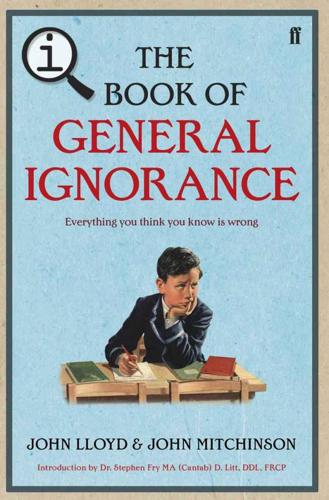
QI: The Book of General Ignorance - The Noticeably Stouter Edition
by
Lloyd, John
and
Mitchinson, John
Published 7 Oct 2010
Most hygienists recommend that washing our hands regularly with good old-fashioned soap and water is the best and safest way to stay healthy. What causes stomach ulcers? It’s not stress or spicy food Contrary to decades of medical advice to the contrary, it turns out that stomach and intestinal ulcers are not caused by stress or lifestyle but by bacteria. Ulcers are still relatively common, afflicting one in ten people. They are painful and potentially lethal. Napoleon and James Joyce both died from complications connected with stomach ulcers. In the early 1980s, two Australian pathologists, Barry Marshall and Robin Warren, noticed that a previously unidentified bacterium colonised the bottom part of the stomachs of people who suffered from gastritis or ulcers.
…
In the early 1980s, two Australian pathologists, Barry Marshall and Robin Warren, noticed that a previously unidentified bacterium colonised the bottom part of the stomachs of people who suffered from gastritis or ulcers. They cultivated it, gave it a name (Helicobacter pylori), and began to run trials. They found that when the bacteria were eliminated, the ulcers healed. Even today, most people still think that ulcers are caused by stress. The medical explanation was that stress diverted blood from the stomach, which reduced the production of its protective mucus lining. This gradually left the tissue beneath vulnerable to stomach acid and the result was an ulcer. What Marshall and Warren were proposing – that a common physiological condition, akin to a blister or a bruise, might actually be an infectious disease – was unprecedented in modern medicine.
…
What produces most of the earth’s oxygen? What were First World War German uniforms made from? What sophisticated mechanism enabled the first successful landing on an aircraft carrier at sea? How many muscles do you have in your fingers? Who discovered penicillin? Is a virus a germ? What causes stomach ulcers? What does your appendix do? What does your appendix do? What is the worst thing to eat for tooth decay? What are guinea pigs used for? What was the first animal in space? Which has the most neck bones, a mouse or a giraffe? How long have the Celts lived in Britain? Who was the first man to circumnavigate the globe?
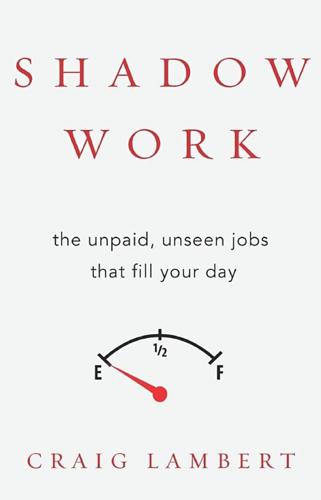
Shadow Work: The Unpaid, Unseen Jobs That Fill Your Day
by
Craig Lambert
Published 30 Apr 2015
For example, for decades, doctors believed that stress and spicy foods caused peptic ulcers, and they prescribed relaxation and bland diets as treatment. Then, in the early 1980s, Australian scientists Barry Marshall and Robin Warren published findings that the bacterium Heliobacter pylori could act as an infectious agent in the stomach and was a likely cause of up to 90 percent of ulcers. (They received the Nobel Prize for this work in 2005.) Pharmaceutical companies (antacids like Tagamet were then the top-selling drugs), gastroenterologists who had been performing surgery on ulcer patients, and psychotherapists who’d treated ulcer sufferers for stress all fiercely resisted the bacterial hypothesis.
…
Pharmaceutical companies (antacids like Tagamet were then the top-selling drugs), gastroenterologists who had been performing surgery on ulcer patients, and psychotherapists who’d treated ulcer sufferers for stress all fiercely resisted the bacterial hypothesis. But study after study showed that giving patients antibiotics that eradicated H. pylori quickly knocked out their ulcers. It took until 1997 for the Centers for Disease Control in the United States to launch a physician education campaign that advocated antibiotic treatment. In other words, you not only can’t believe everything you read in the newspaper, but you can’t believe everything you read in The New England Journal of Medicine. Unfortunately, the untrained, shadow-working patient is rarely well equipped to weigh the balance of evidence and assess the scientific validity of studies she may turn up on the web.

Trick or Treatment: The Undeniable Facts About Alternative Medicine
by
Edzard Ernst
and
Simon Singh
Published 17 Aug 2008
The last fallacy is worth exploring further, as science is often portrayed as a closed shop, when in fact the scientific community lovingly embraces those mavericks who can find evidence to support their claims. For example, in the 1980s, Australian researchers Barry Marshall and Robin Warren suggested that most peptic ulcers are caused by bacteria. The conventional view was that excess acid, the wrong diet and too much stress were the major factors in causing ulcers, which is why initially nobody took Marshall and Warren’s revolutionary idea seriously. However, in a famous and courageous experiment, Marshall successfully identified the rogue bacteria, cultured it, swallowed it and developed ulcers, thereby proving that ulcers had a bacterial origin. Obviously, other medical scientists were now convinced by the new theory and rewarded Marshall and Warren with a Nobel Prize in 2005.
…
Bannerman to summarize the evidence for and against acupuncture. His conclusions shocked sceptics and vindicated the Chinese. In Acupuncture: the WHO view, Bannerman stated that there were more than twenty conditions which ‘lend themselves to acupuncture treatment’, including sinusitis, common cold, tonsillitis, bronchitis, asthma, duodenal ulcers, dysentery, constipation, diarrhoea, headache and migraine, frozen shoulder, tennis elbow, sciatica, low back pain and osteoarthritis. This WHO document, and other similarly positive commentaries, marked a watershed in terms of acupuncture’s credibility in the West. Budding practitioners could now sign up to courses with confidence, safe in the knowledge that this was a therapy that genuinely worked.
…
Eyes sunken, surrounded by dark rings. Bright red. Sweaty. Epithelioma of lip. Cheeks hot and flushed. Aching in left jaw-point. Stomach Salivation. Fermentation in stomach. Intense burning thirst. Cold drinks distress. Vomits after every kind of food. Epi-gastric tenderness. Burning pain as of an ulcer. Cancer of stomach. Sour belching and vomiting. Burning water brash and profuse salivation. Hyperchlorhydria and gastralgia. Violent burning pain in stomach and chest, followed by coldness of skin and cold sweat on forehead. Stomach feels as if she had taken a lot of vinegar. Abdomen Feels as if abdomen was sinking in.
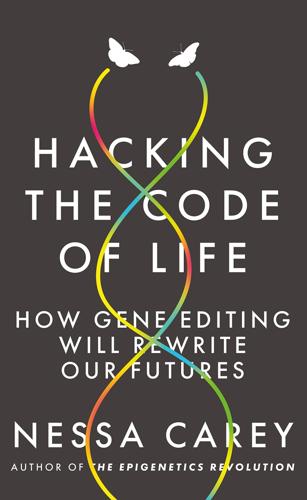
Hacking the Code of Life: How Gene Editing Will Rewrite Our Futures
by
Nessa Carey
Published 7 Mar 2019
In fact, he was using gene editing to inhibit the myostatin gene, the same approach that’s already been successfully trialled for creating highly muscled sheep and rabbits. In some ways Zayner was following in a long tradition of medical self-experimentation. Pierre Curie taped a packet of radium salts to his arm to demonstrate that radiation causes burns. Barry Marshall deliberately swallowed bacteria in order to test his hypothesis that stomach ulcers are caused by Helicobacter pylori infections (he was right, poor chap). One feature that is quite noticeable from this history of medical self-experimentation is that the person involved frequently suffered harm as a result of the procedure. This is often one of the drivers for self-experimentation.
…
1 ethics 1, 2 legal considerations 1 gluten proteins 1 GM crops/foods 1, 2 goats 1, 2 Golden Rice 1 gout 1 Greenpeace 1 growth hormone 1 Gruber Prize in Genetics 1 Guardian of the Genome 1 guide molecule 1, 2 H haemoglobin 1 adult 1 foetal 1 Harvard Medical School 1 He Jiankui 1, 2, 3, 4 health economics 1, 2 heart attacks 1 heel prick test 1 Helicobacter pylori 1 hereditary angioedema 1 heredity 1 HIV-1 1 hops 1 hormone deficiency 1 hormone replacement therapy 1 humans gene editing in 1 genetic disorders in see genetic disorders genome sequence 1 Hunter’s syndrome 1, 2 Huntington’s disease 1, 2, 3 I immune cells 1 immune defenders 1 immunity adaptive 1 bacterial 1 Imperial College London 1 influenza 1 vaccine 1 informed consent 1 insecticides 1 insects, gene editing in 1, 2 Institute of Livestock and Grassland Science (Tsukuba) 1 insulin 1, 2, 3 intellectual property 1, 2 iridescence 1 irradiation 1 IVF 1, 2, 3, 4, 5, 6 J Johannsen, Wilhelm 1 K Kanuma 1 Kavli Prize 1 Kennedy, John F. 1 Kenya 1 kidneys 1 King’s College London 1 Komodo dragons 1, 2 L The Lancet 1 Lander, Eric 1 Latin America, invasion by Europeans 1 learning disability 1 Leber’s congenital amaurosis 1 Leigh syndrome 1 Lepidoptera 1 Lesch-Nylan syndrome 1 life expectancy 1 Linnaeus, Carl 1 liver 1, 2 London Underground 1 Lulu 1 M macular degeneration 1 Madeux, Brian 1 maize 1 malaria 1, 2, 3 Marraffini, Luciano 1 Marshall, Barry 1 ‘matching’ 1 McCullough, Candy 1 measles 1 meat consumption 1 lean 1 medical self-experimentation 1 melanin 1 Mendel, Gregor 1 Merino sheep 1 mice 1, 2 Michelangelo 1 mitochondria 1 MMR vaccine 1 Mojica, Francisco 1 mosquitoes 1, 2 Friendly Mosquito 1 moths 1 mouse cell lines, gene editing in 1 multiple sclerosis 1, 2 muscle development 1, 2 muscle wasting 1, 2 mushrooms 1 mutations 1, 2 myostatin gene 1, 2 N Nana 1 narcolepsy 1 National Institute for Health and Care Excellence 1 Nature Methods 1 neonicotinoids 1 neurodegeneration 1, 2 neurons 1 New Hope Fertility Centre (New York) 1 New Zealand 1 Nixon, Richard 1 Nobel Prize 1 O oral contraceptives 1 organ transplantation 1, 2 over-consumption 1, 2 Oxitec 1 oxygen 1, 2 P p53 1 paracetamol 1 Parkinson’s disease 1 Parton, Dolly 1 patents 1, 2 peas 1 peer review 1 Perdue, Sonny 1 pesticides 1 pharmaceuticals 1 phenylketonuria (PKU) 1 Piedmont cattle 1 pigs 1, 2, 3, 4 organ transplants from 1 pituitary gland 1 plant cells 1 plants first gene-edited 1 gene editing in 1 speeding up breeding 1 polio 1 pollinating insects 1 population, world 1 potatoes 1 pre-implantation genetic diagnosis 1 pre-natal testing 1 Predator Free 2050 1 prickly pear cactus 1 privileged sites 1 proteins 1 PRRSV 1 Purdue University (Indiana) 1 Pusztai, Árpád 1 R rabbits 1, 2 radiation 1, 2 raptors 1 rats 1, 2 recessive genetic disorders 1 red blood cells 1 regenerative medicine 1 research flawed 1 investments in 1 retinitis pigmentosa 1 rheumatoid arthritis 1, 2 rice Golden 1 yields 1 Riley, Eleanor 1 risk, assessing 1, 2 RNA 1, 2 Rochester, University of 1 Rockefeller University (New York) 1 rodents 1 Roslin Institute 1 Royal Society 1 S safety, drug 1 salinity 1 Sangamo Therapeutics 1 schizophrenia 1 Science journal 1, 2, 3 scissors 1 self-mutilation 1 sheep 1 Merino 1 Texel 1 Shiant Isles 1 sickle cell disease 1, 2, 3, 4 sign languages 1 Šikšnys, Virginijus 1 single gene disorders 1, 2 sketching gene 1 skin blistering 1 sleeper agents 1 small molecules 1, 2 snakebites 1 South Georgia 1 space programme 1 spacers 1 sperm 1, 2, 3, 4 mosquito 1 spinal cord regeneration 1 St John’s wort 1 Stanford University (California) 1, 2 statins 1, 2, 3 stem cells 1, 2 stick insects 1 Stockholm 1 stomach ulcers 1 strawberries 1 strokes 1 structural colouration 1 suicide genes 1 super-beings 1 Surani, Azim 1 T tetracycline 1 Texel sheep 1 thalassemias 1, 2, 3 U UCP1 gene 1 UK, three-parent procedures 1 University of California, Berkeley 1, 2, 3, 4 University of California, San Diego 1 University of California, San Francisco (UCSF) 1, 2 uric acid 1 US Department of Agriculture 1, 2, 3 US Patent Office 1 V vaccination 1, 2 Vertex Pharmaceuticals 1 Viagra 1 Victoria, Queen 1 Vienna, University of 1, 2 Vilnius, University of 1 viral infections 1 vitamin A 1 W Wakefield, Andrew 1 Washington Post 1 water, competition for 1 Watson, James 1 wheat 1, 2, 3 Wilkins, Maurice 1 wisdom 1 World Health Organization 1, 2, 3 X xenotransplantation 1 Y Yamanaka, Shinya 1 yeast 1, 2 yellow fever 1, 2 yields, of crops 1 Z Zayner, Josiah 1 Zhang, Feng 1, 2, 3, 4 Zika virus 1, 2 zygotes 1, 2, 3 ABOUT THE AUTHOR Nessa Carey worked in the biotech and pharma industry for thirteen years and is a Visiting Professor at Imperial College London.
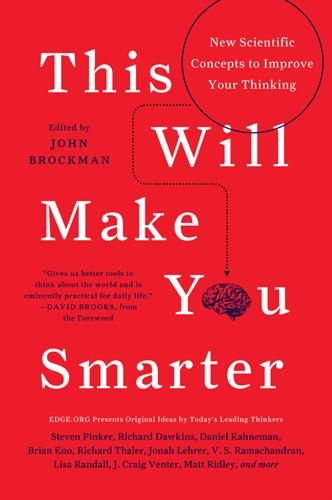
This Will Make You Smarter: 150 New Scientific Concepts to Improve Your Thinking
by
John Brockman
Published 14 Feb 2012
During the years of hostile treatment by her peers, McClintock didn’t publish, preferring to avoid the rejection of the scientific community. Stanley Prusiner faced significant criticism from his colleagues until his prion theory was confirmed. He, too, went on to win a Nobel Prize, in 1997. Barry Marshall challenged the medical “fact” that stomach ulcers were caused by acid and stress and presented evidence that bacterial infection by H. pylori is the cause. Marshall noted in an 1998 interview that “Everyone was against me.” Progress in medicine was delayed while these “projective thinkers” persisted, albeit on a slower and lonelier course.
…
(Its members also fund one another, and review one another’s papers and grants, and give one another awards.) This isn’t entirely useless; it’s “normal science” that grows by progressive accretion, employing the bricklayers rather than the architects of science. If a new experimental observation (e.g., bacterial transformation; ulcers cured by antibiotics) threatens to topple the edifice, it’s called an anomaly, and the typical reaction of those who practice normal science is to ignore it or brush it under the carpet—a form of psychological denial surprisingly common among my colleagues. This is not an unhealthy reaction, since most anomalies turn out to be false alarms; the baseline probability of their survival as real anomalies is small, and whole careers have been wasted pursuing them (think polywater and cold fusion).
…
S., 242–45 Randall, Lisa, 192–93 randomness, 105–8 rational unconscious, 146–49 ratios, 186 Read, Leonard, 258 realism, naïve, 214 Reality Club, xxix recursive structure, 246–49 reductionism, 278 Rees, Martin, 1–2 regression, 235 ARISE and, 235–36 relationalism, 223 relativism, 223, 300 relativity, 25, 64, 72, 234, 297 religion, 5, 6, 114 creationism, 268–69 self-transcendence and, 212–13 supernatural beings in, 182–83 and thinking in time vs. outside of time, 222 repetition, in manufacture, 171 replicability, 373–75 Revkin, Andrew, 386–88 Ridley, Matt, 257–58 risk, 56–57, 68–71, 339 security theater and, 262 statistical thinking and, 260 risk aversion, 339 risk literacy, 259–61 Ritchie, Matthew, 237–39 Robertson, Pat, 10 Roman Empire, 128 root-cause analysis, 303–4 Rosen, Jay, 203–5 Rovelli, Carlo, 51–52 Rowan, David, 305–6 Rucker, Rudy, 103–4 Rushkoff, Douglas, 41–42 Russell, Bertrand, 123 Rwanda, 345 Saatchi, Charles, 307–8 safety, proving, 281 Saffo, Paul, 334–35 Sagan, Carl, 273, 282 Sakharov, Andrei, 88 Salcedo-Albarán, Eduardo, 345–48 Sampson, Scott D., 289–91 Sapolsky, Robert, 278–80 Sasselov, Dimitar, 13–14, 292–93 SAT tests, 47, 89 scale analysis, 184–87 scale transitions, 371–72 scaling laws, 162 Schank, Roger, 23–24 Schmidt, Eric, 305 schools, see education Schrödinger’s cat, 28 Schulz, Kathryn, 30–31 science, 192–93 discoveries in, 109–11, 240–41, 257 humanities and, 364–66 method of, 273–74 normal, 242–43, 244 pessimistic meta-induction from history of, 30–31 replicability in, 373–75 statistically significant difference and, 378–80 theater vs., 262–63 scientific concept, 19, 22 scientific lifestyle, 19–22 scientific proof, 51, 52 scuba divers, 40 seconds, 163 security engineering, 262 security in information-sharing, 75–76 Segre, Gino, 28–29 Sehgal, Tino, 119 Seife, Charles, 105–8 Sejnowski, Terrence, 162–64 self, 212 ARISE and, 235–36 consciousness, 217 Other and, 292–93 separateness of, 289–91 subselves and the modular mind, 129–31 transcendence of, 212–13 self-control, 46–48 self-model, 214 self-serving bias, 37–38, 40 Seligman, Martin, 92–93 Semelweiss, Ignaz, 36 senses, 43, 139–42 umwelt and, 143–45 sensory desktop, 135–38 September 11 attacks, 386 serendipity, 101–2 serotonin, 230 sexuality, 78 sexual selection, 228, 353–54 Shamir, Adi, 76 SHAs (shorthand abstractions), xxx, 228, 277, 395–97 graceful, 120–23 Shepherd, Jonathan, 274 Shermer, Michael, 157–59 shifting baseline syndrome, 90–91 Shirky, Clay, xxvii, 198, 338 signal detection theory, 389–93 Signal Detection Theory and Psychophysics (Green and Swets), 391 signals, 228 Simon, Herbert, 48 simplicity, 325–27 skeptical empiricism, 85 skepticism, 242, 243, 336 skydivers, 39 Smallberg, Gerald, 43–45 smell, sense of, 139–42, 143–44 Smith, Adam, 258 Smith, Barry C., 139–42 Smith, Hamilton, 166 Smith, Laurence C., 310–11 Smith, John Maynard, 96 Smolin, Lee, 221–24 social microbialism, 16 social networks, 82, 262, 266 social sciences, 273 Socrates, 340 software, 80, 246 Solomon Islands, 361 something for nothing, 84 specialness, see uniqueness and specialness Sperber, Dan, 180–83 spider bites, 68, 69, 70 spoon bending, 244 stability, 128 Standage, Tom, 281 stars, 7, 128, 301 statistically significant difference, 378–80 statistics, 260, 356 stem-cell research, 56, 69–70 stock market, 59, 60–61, 151, 339 Flash Crash and, 60–61 Pareto distributions and, 199, 200 Stodden, Victoria, 371–72 stomach ulcers, 240 Stone, Linda, 240–41 stress, 68, 70, 71 string theories, 113, 114, 299, 322 subselves and the modular mind, 129–31 success, failure and, 79–80 sun, 1, 7, 11, 164 distance between Earth and, 53–54 sunk-cost trap, 121 sunspots, 110 Superorganism, The (Hölldobler and Wilson), 196–97 superorganisms, 196 contingent, 196–97 supervenience, 276, 363–66 Susskind, Leonard, 297 Swets, John, 391 symbols and images, 152–53 synapses, 164 synesthesia, 136–37 systemic equilibrium, 237–39 Szathmáry, Eörs, 96 Taleb, Nassim, 315 TANSTAAFL (“There ain’t no such thing as a free lunch”), 84 Tapscott, Don, 250–53 taste, 140–42 tautologies, 355–56 Taylor, F.
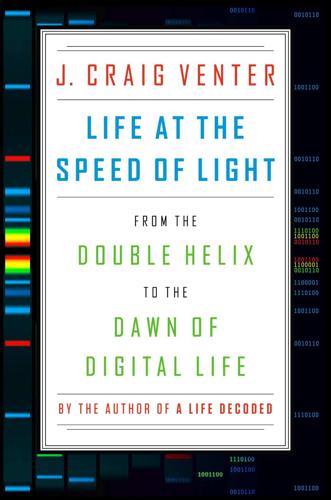
Life at the Speed of Light: From the Double Helix to the Dawn of Digital Life
by
J. Craig Venter
Published 16 Oct 2013
It is now clear that the structures seen in ALH 84001 are not from living things and that crystal growth mechanisms are able to produce deposits that resemble primitive cells.22 Over the next few years my team would go on to sequence a large number of unusual species genomes, including one that was inspired by the pioneering work of Barry Marshall, in Australia. He and pathologist Robin Warren believed that spiral-shaped bacteria, later named Helicobacter pylori, were responsible for stomach ulcers. I had been inspired by how Marshall had persevered, despite his work’s being constantly challenged. His peers did not want to believe that bacteria, and not stress, could be the cause of ulcers. In 1984 Marshall had had the courage of his convictions to swallow a solution of the bacteria. He soon threw up and developed stomach inflammation.
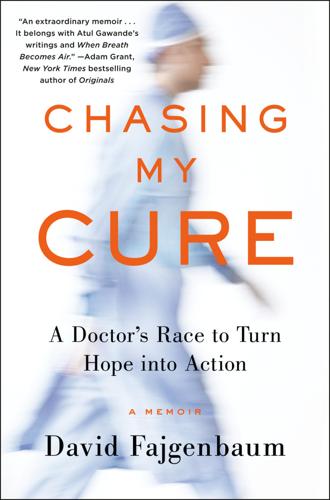
Chasing My Cure: A Doctor's Race to Turn Hope Into Action; A Memoir
by
David Fajgenbaum
Published 9 Sep 2019
In fact, twelve Nobel Prizes have been given to self-experimenters. Dr. Werner Forssmann pioneered the development of cardiac catheterization by first inserting such a catheter into a vein in his arm and successfully guiding it to his heart. Dr. Barry Marshall proved that a particular strain of bacteria causes ulcers by drinking a broth filled with the bacteria. This led to a Nobel Prize and also an entirely new way of treating—and curing—such ulcers. Kazu’s example—that of both scientist and subject—would come to be very, very significant for me. As I researched Castleman disease, I felt a part of me reemerging, a part I had had to lay down when I first dragged myself into the ER: I felt like a doctor again.

If Anyone Builds It, Everyone Dies: Why Superhuman AI Would Kill Us All
by
Eliezer Yudkowsky
and
Nate Soares
Published 15 Sep 2025
Going by the history of engineering, that level of systemic incompetence would be more than enough to end in disaster, even if we were wrong in the entire previous chapter and the whole problem was only as hard as not licking radium off paintbrushes. IfAnyoneBuildsIt.com/11 Footnotes i Or as we would call it, a 3:1 mixture of hydrochloric acid and nitric acid. ii We salute mad inventors who risk their own lives for science, provided that they do not also risk the lives of others. Dr. Barry Marshall drank a culture of the bacterium H. pylori to prove that stomach ulcers were caused by bacteria rather than stress and all humanity reaped the benefit from the risk to which he exposed only himself. Marie and Pierre Curie, two of the first researchers on radioactivity, didn’t know what the pretty glowing substances would do to them; but they did know they were messing with something strange, and did not go around hiding glowing rocks in other people’s luggage unawares.

Culture and Prosperity: The Truth About Markets - Why Some Nations Are Rich but Most Remain Poor
by
John Kay
Published 24 May 2004
Two consecutive categories of drugs-the H2 receptor antagonists, Tagamet and Zantac, and the proton pump inhibitors, Losee and Zoton-have been among the most profitable drugs in the history of the pharmaceutical industry. A blockbuster drug typically relieves, but does not cure, common chronic illnesses such as depression or hypertension. But these drugs are not the only way to treat stomach acidity. Two Australian physicians, Robin Warren and Barry Marshall, discovered that many ulcers were caused by a bacterium, Helicobacter pylori) which could be eliminated by an intensive program of widely { 274} John Kay available antibiotics. Chemical substances are patentable. Treatment protocols are not. Warren and Marshall's rewards for their discovery have been limited to academic kudos and the gratitude of patients. 17 The Disney corporation is primarily a vehicle for the exploitation of the intellectual property created by its founder, Walt.
…
Intellectual property law creates this monopoly, but following court decisions in 2001 and 2002, antitrust law controls it only weakly. 16 This interaction between intellectual property rules and antitrust rules has made Microsoft one of the world's most valuable companies and Bill Gates one of the world's richest men. Often, it is a matter of chance whether new knowledge is protected by intellectual property laws and becomes precious, or not. Over the last thirty years, great progress has been made in treating stomach ulcers, which created perpetual discomfort, and sometimes the necessity of invasive surgery, for people with stressful careers. These conditions can now be successfully treated with drugs that control the level of stomach acidity. Two consecutive categories of drugs-the H2 receptor antagonists, Tagamet and Zantac, and the proton pump inhibitors, Losee and Zoton-have been among the most profitable drugs in the history of the pharmaceutical industry.
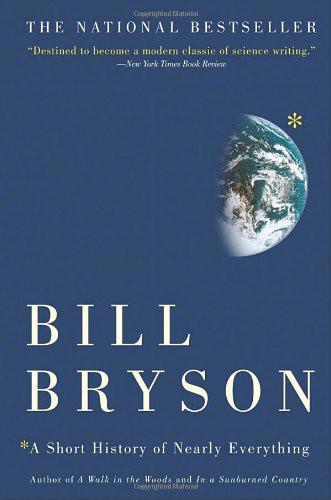
A Short History of Nearly Everything
by
Bill Bryson
Published 5 May 2003
Our carelessness is all the more alarming since the discovery that many other ailments may be bacterial in origin. The process of discovery began in 1983 when Barry Marshall, a doctor in Perth, Western Australia, found that many stomach cancers and most stomach ulcers are caused by a bacterium called Helicobacter pylori. Even though his findings were easily tested, the notion was so radical that more than a decade would pass before they were generally accepted. America's National Institutes of Health, for instance, didn't officially endorse the idea until 1994. “Hundreds, even thousands of people must have died from ulcers who wouldn't have,” Marshall told a reporter from Forbes in 1999.

Cable Cowboy
by
Mark Robichaux
Published 19 Oct 2002
Malone’s antipathy infected all of TCI and, occasionally, got the company in trouble. Despite its best efforts to the contrary, the company drew a glaring spotlight on a testy corporate attitude regarding the new law. In the fall of 1993, an internal TCI memo 9486_Robichaux_02.f.qxd 8/28/02 9:54 AM Page 131 Fi ve Hu nd red C ha n nels made its way to the press. Barry Marshall, chief operating officer, had written a memo to all TCI cable system managers, state managers, and division vice presidents, outlining a plan to deal with the onerous regulations. Dated August 20, 1993, the memo read, in part, that TCI should start charging full price for “upgrades, downgrades, customer-caused service calls, VCR hookups, etc.”
…
This way, the heads of engineering, operations, and accounting were mere steps from one another, and they were all close to Malone’s office. It was from here that Malone commanded his f leet of cable systems. Like Magness before him, Malone did not believe in memos. No paper passed from his desk to underlings. No executive sought to curry favor or engage in the sort of Kremlinesque politics that causes ulcers in so many midlevel executives. Communication was direct, effective, and efficient. Every Monday morning, Malone sat with his closest executives at a broad round table, much as Magness had done, to figure a way to squeeze more out of TCI’s growing cable kingdom. They shared secretaries, and an automated service answered the phone. “ We don’t believe in staff.